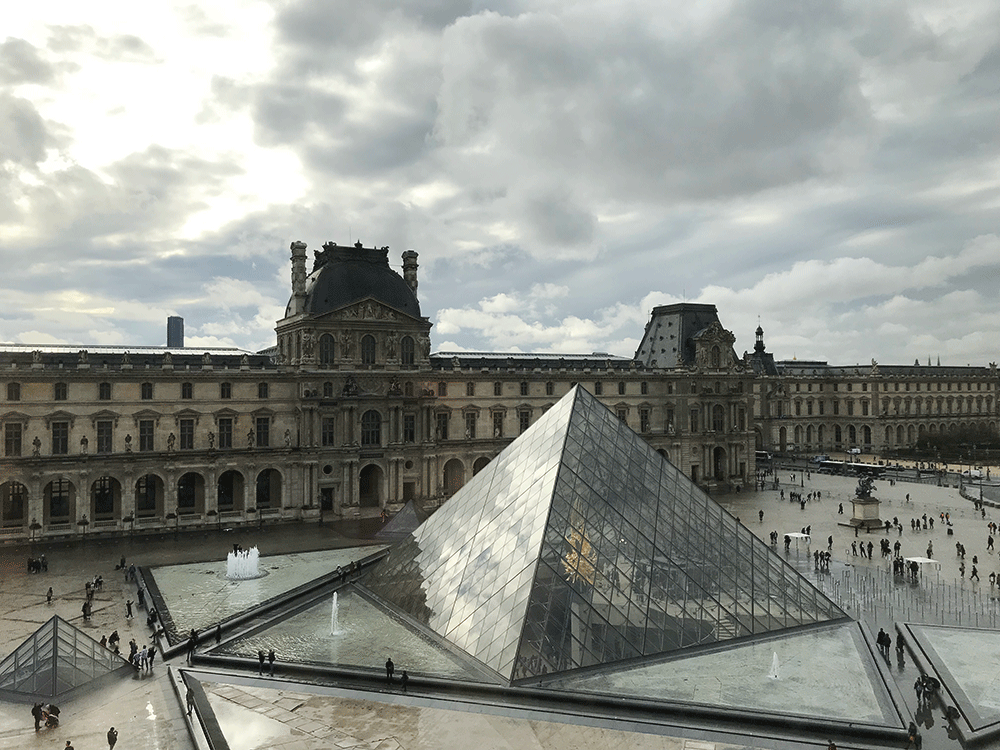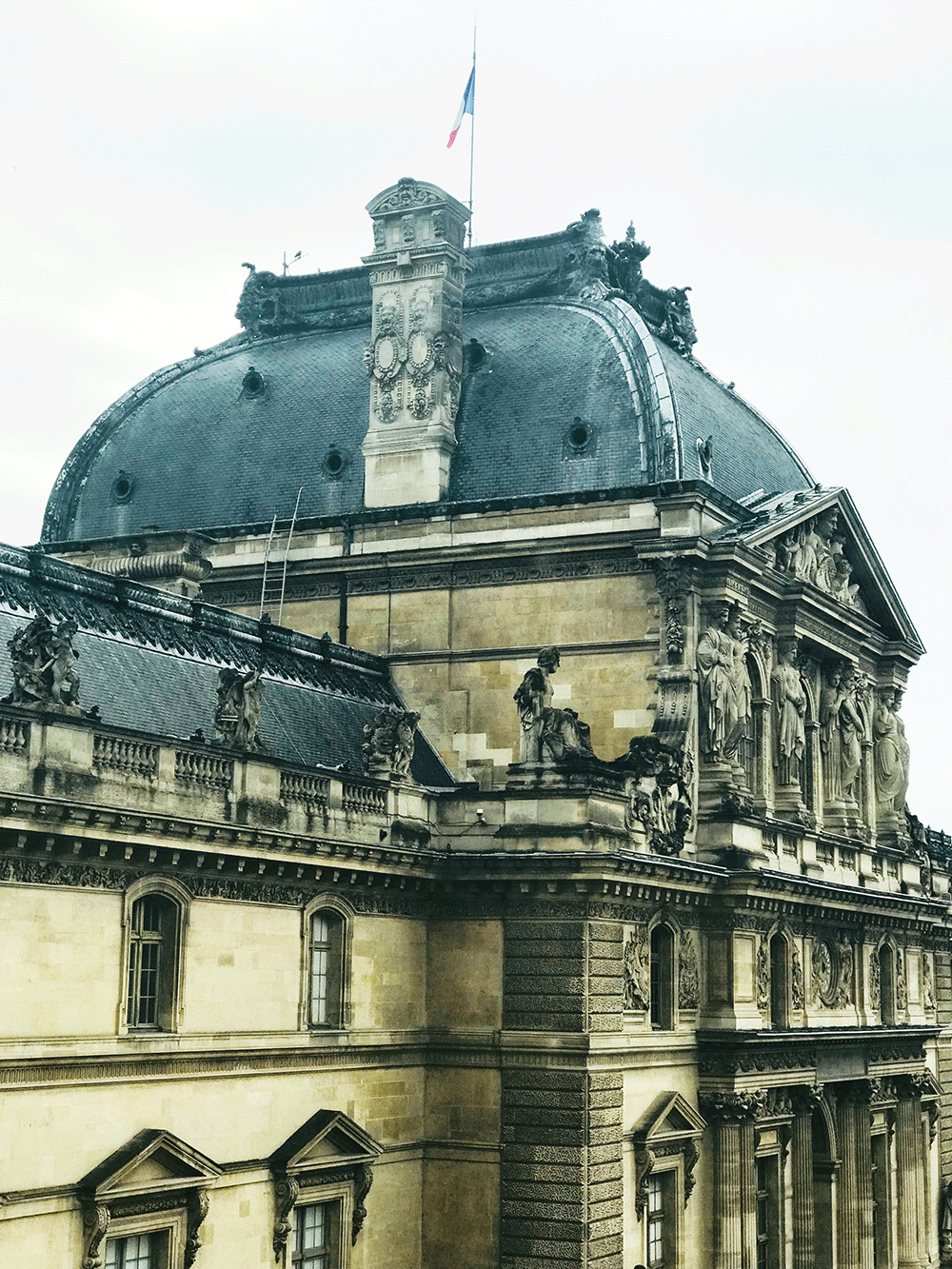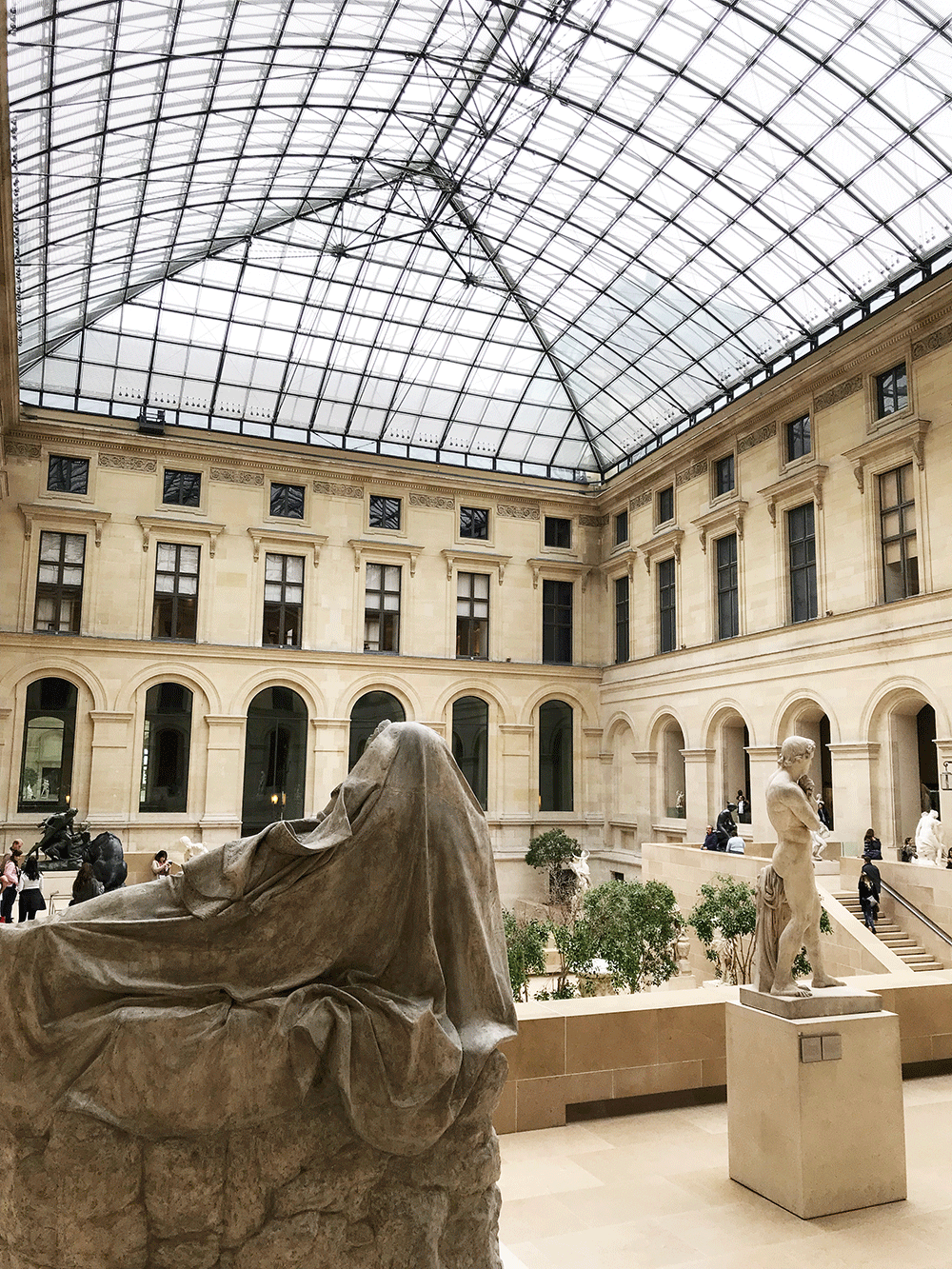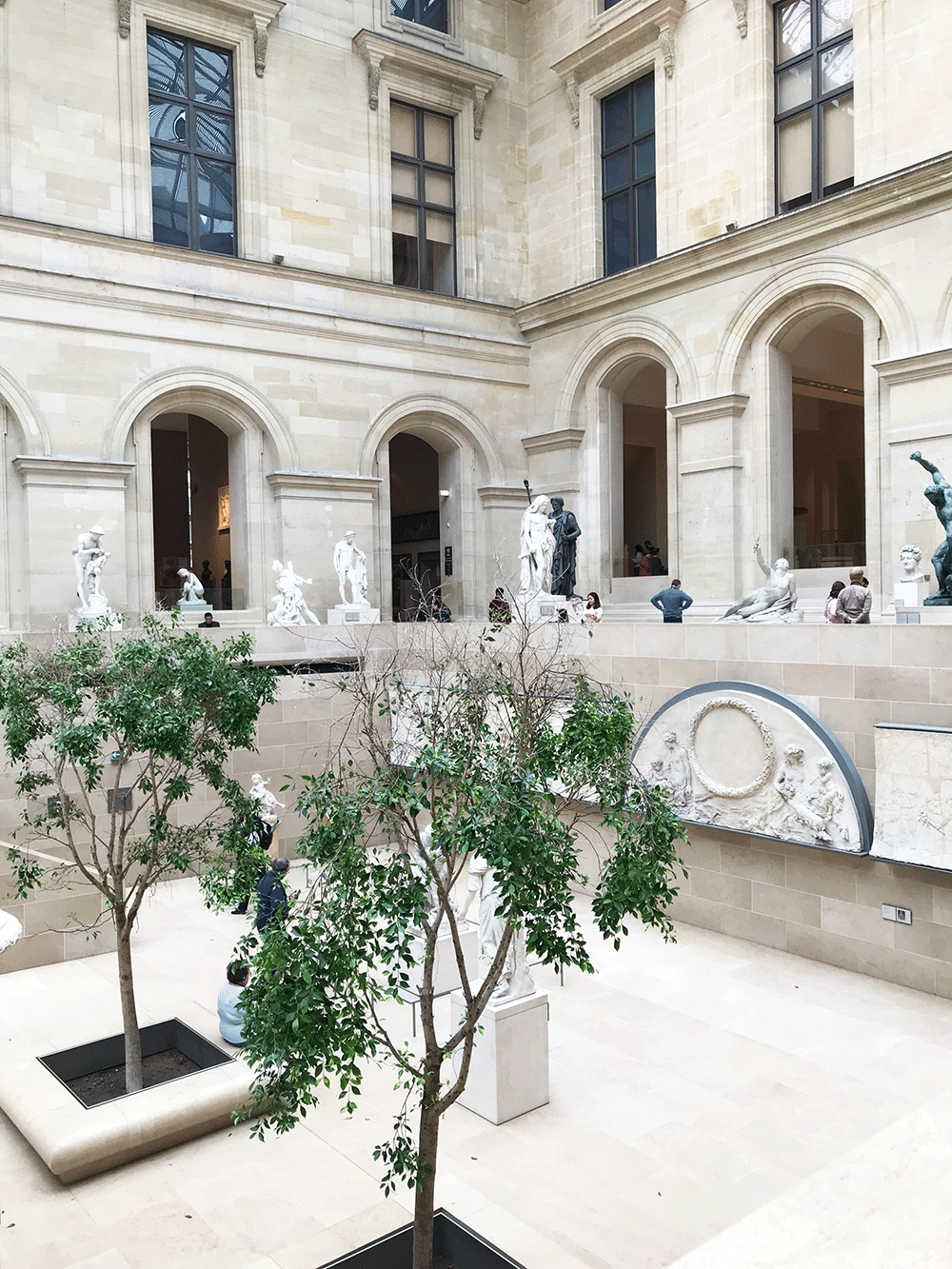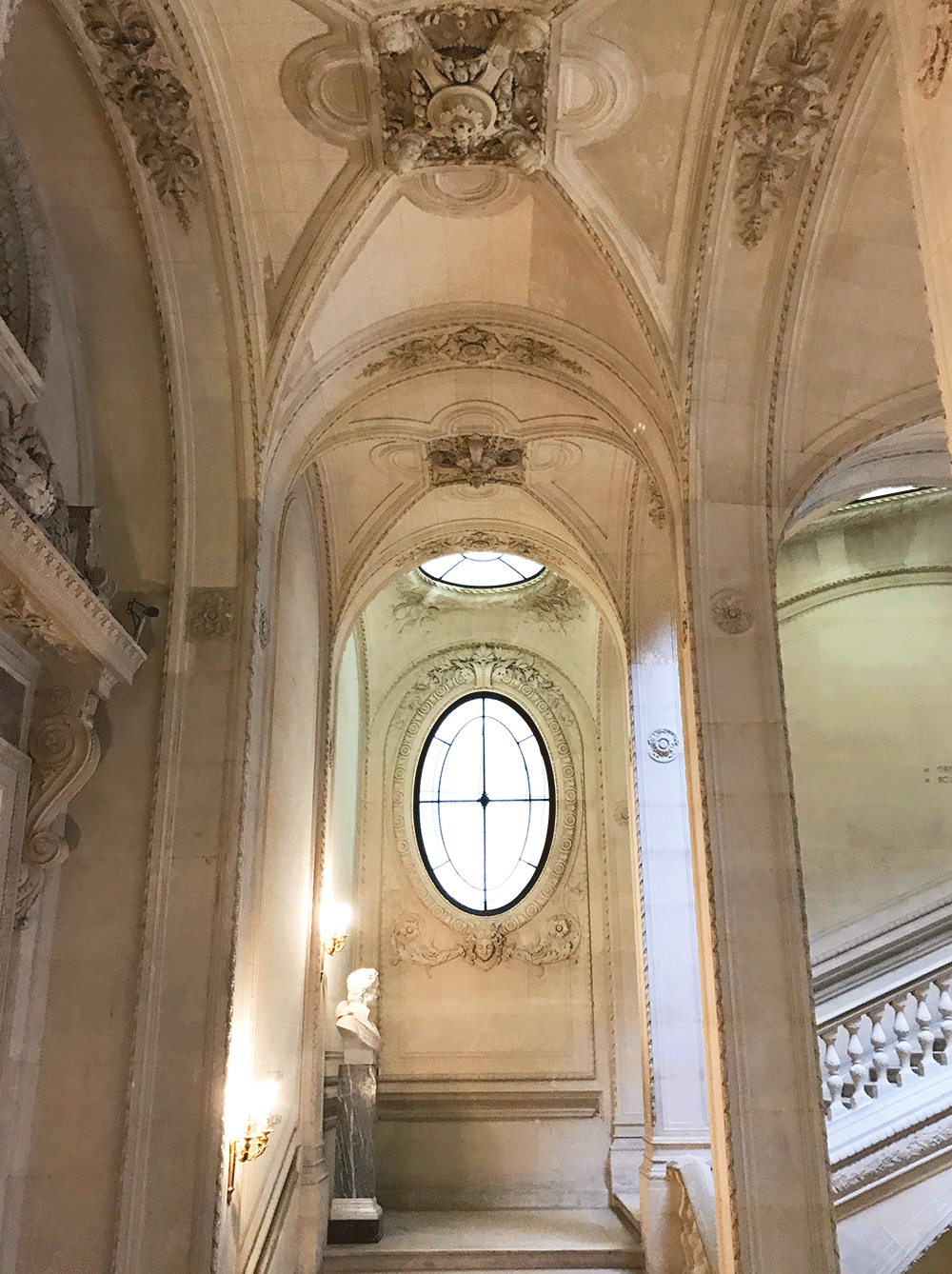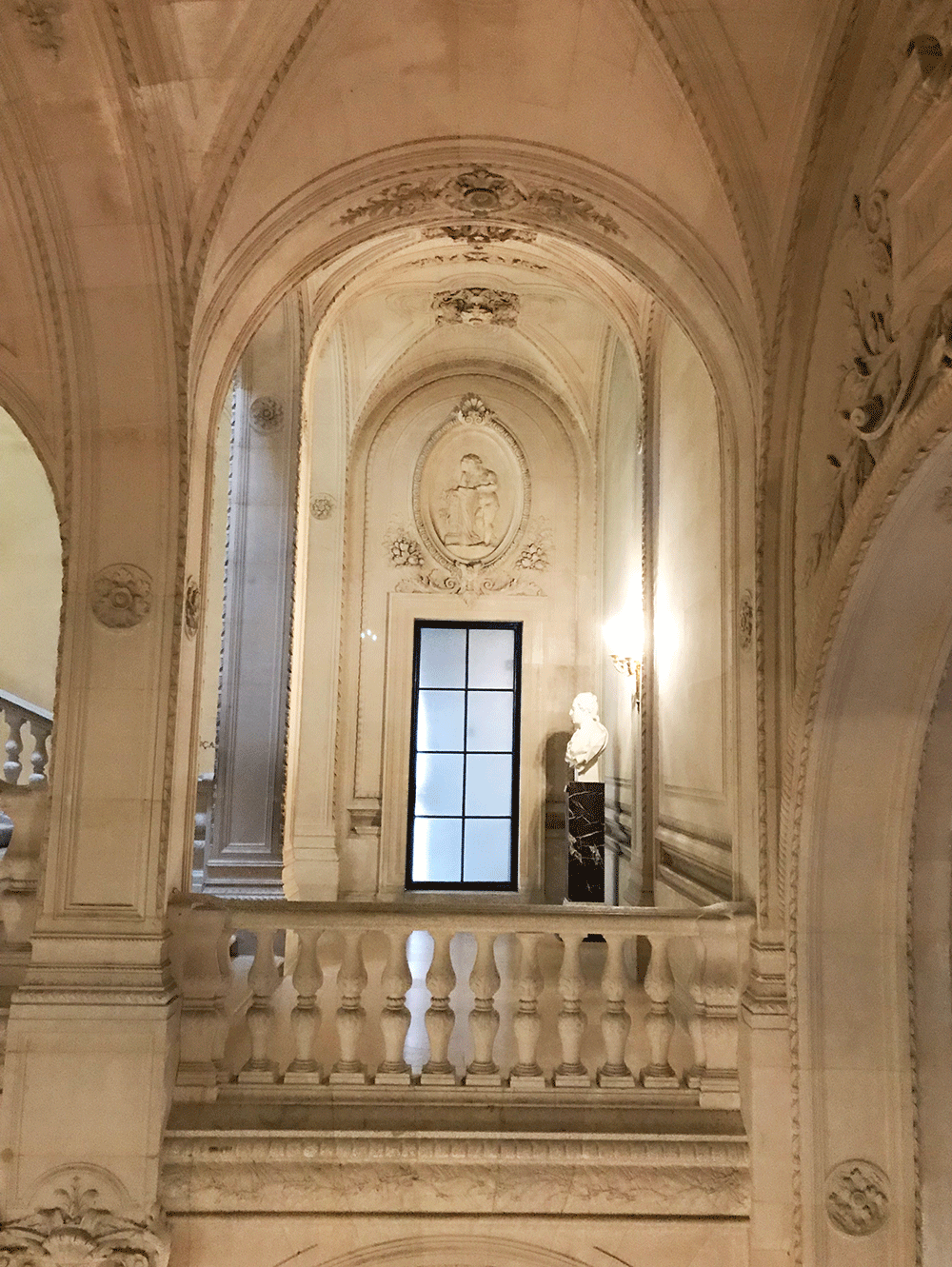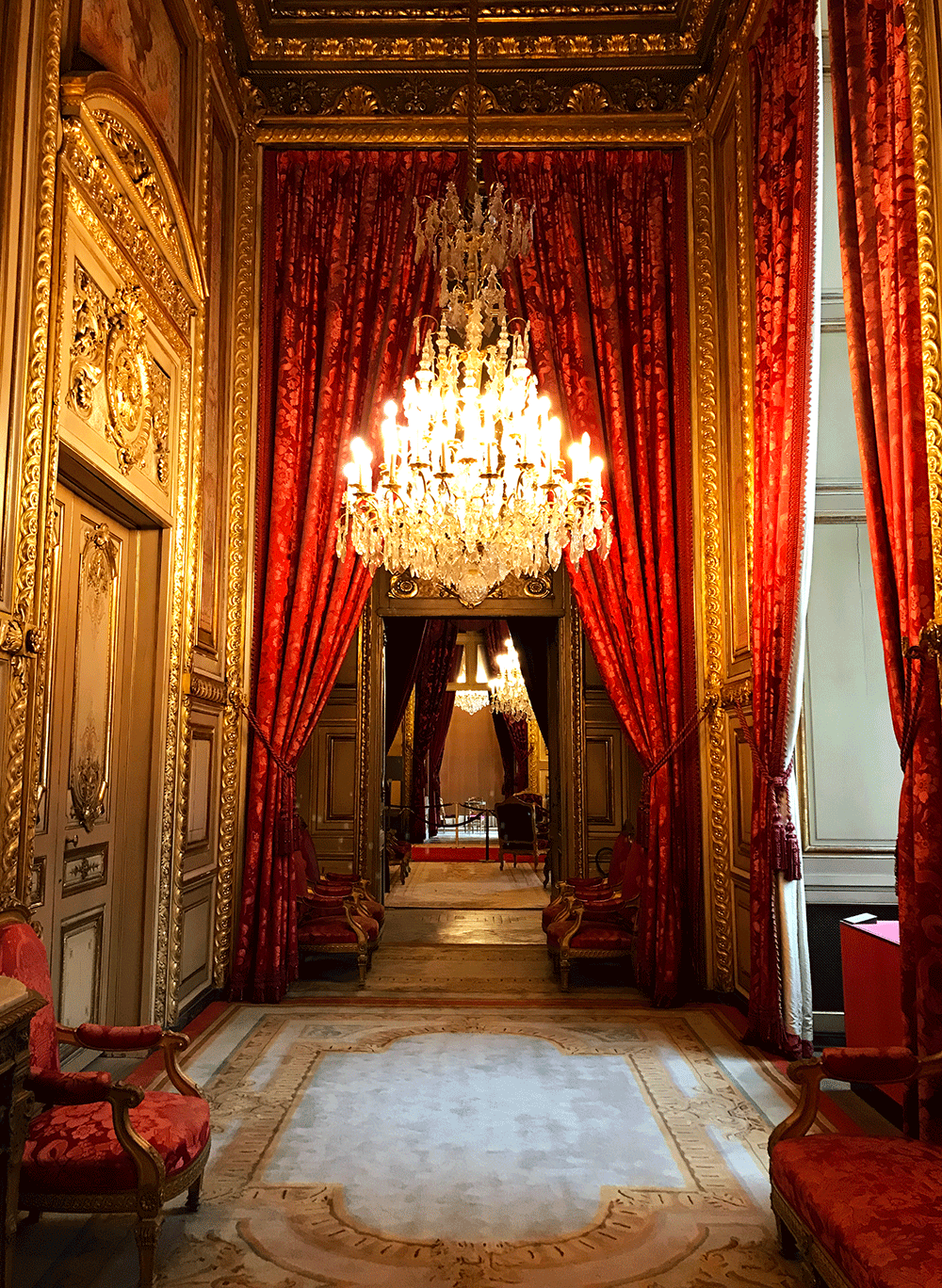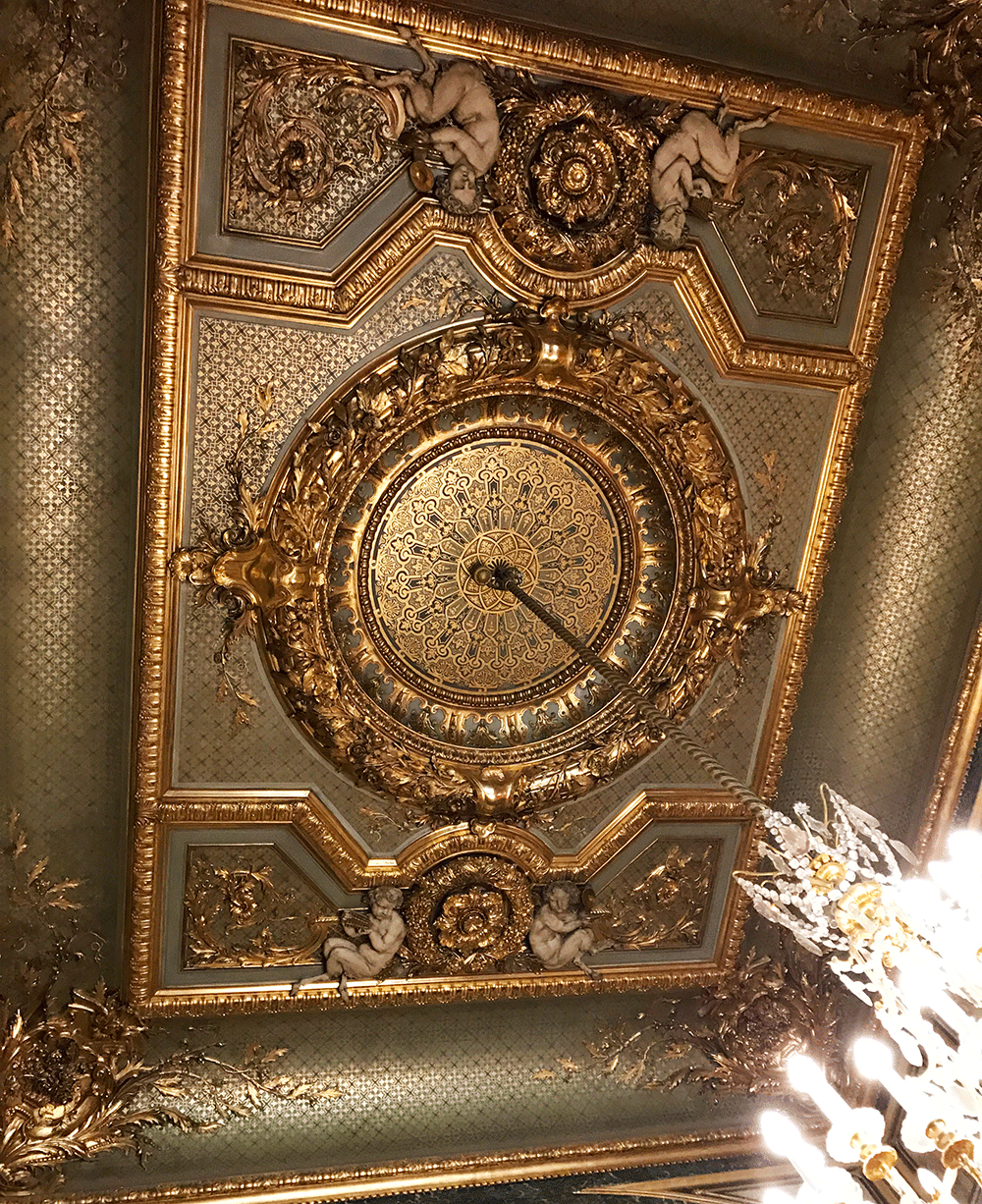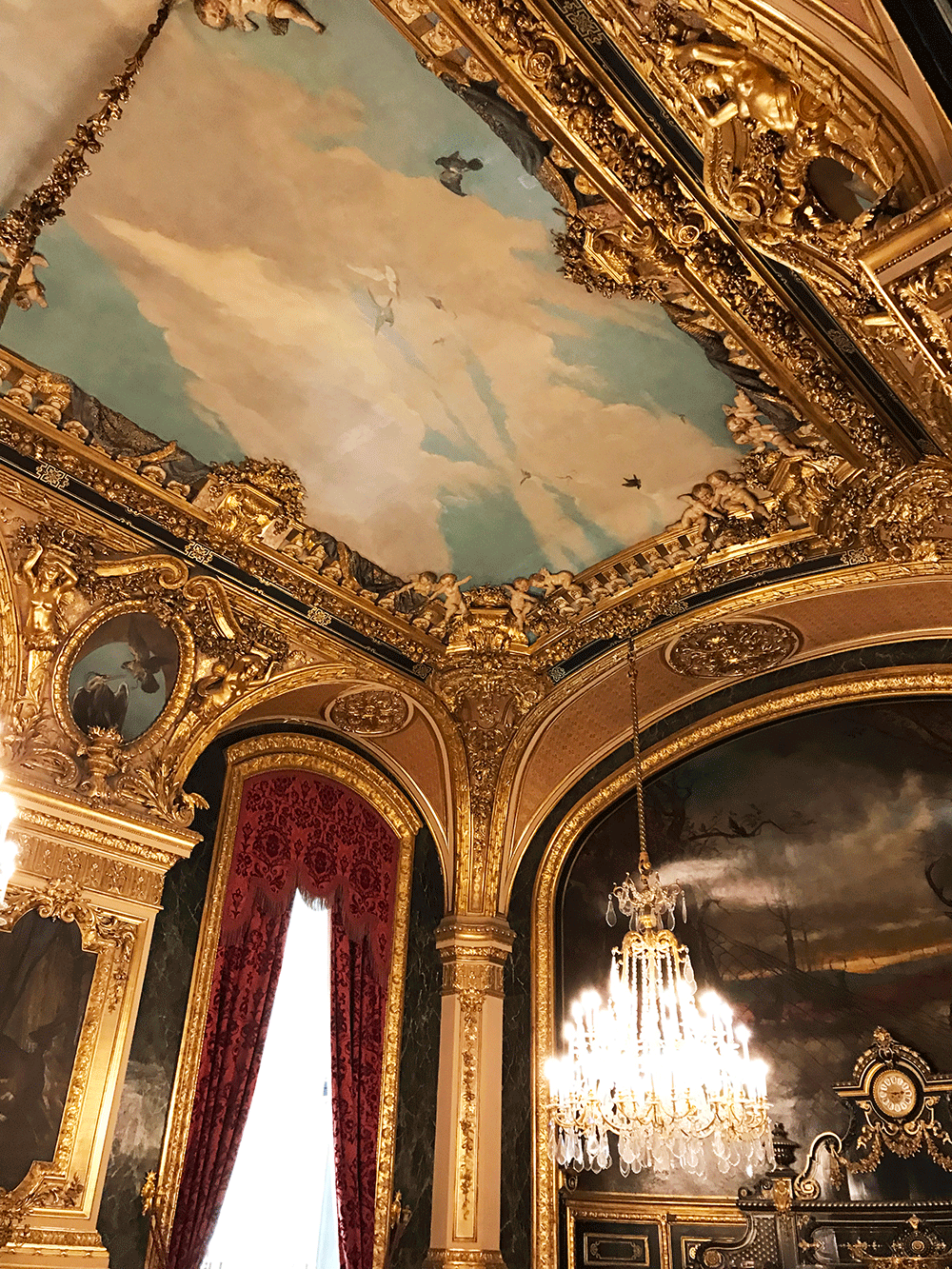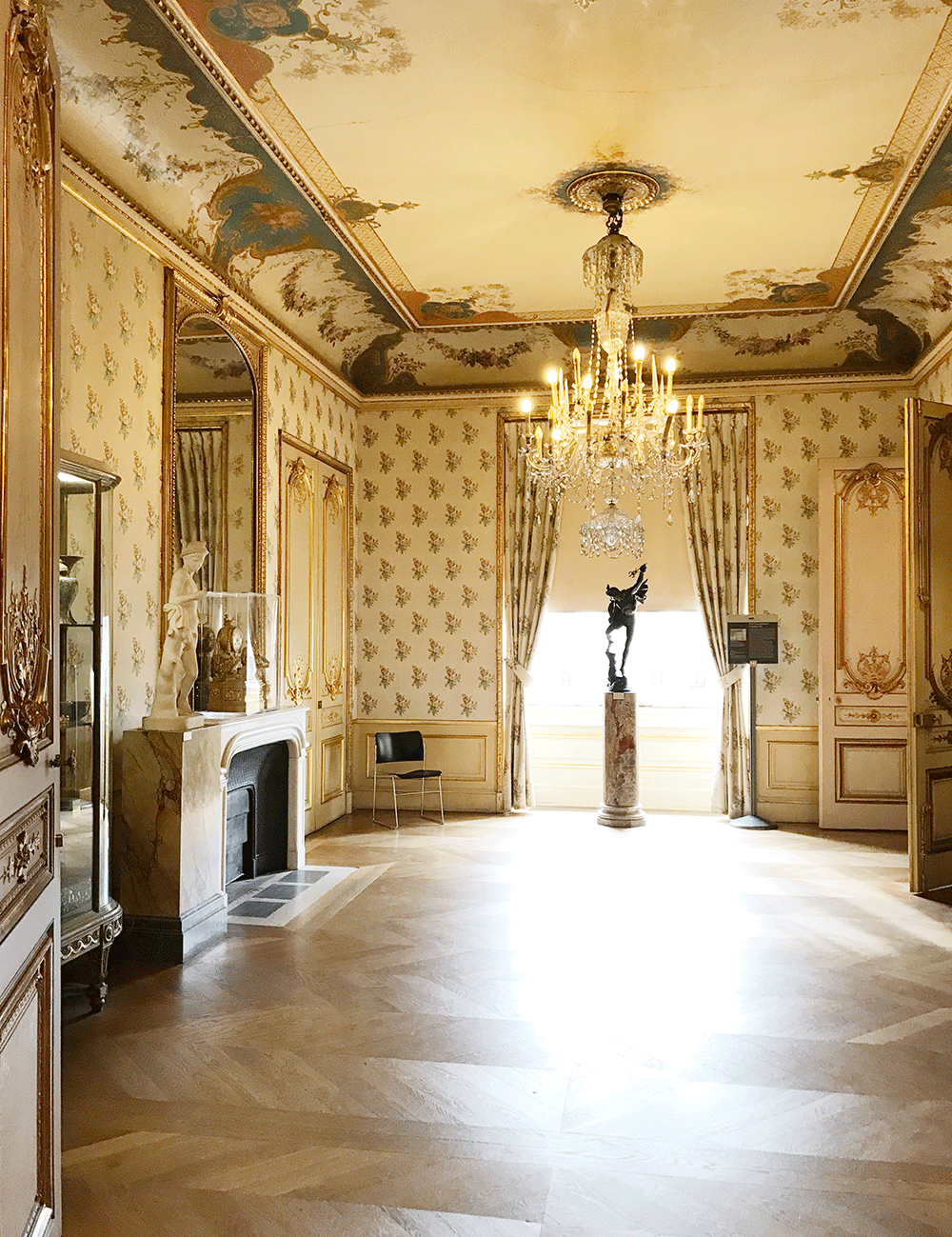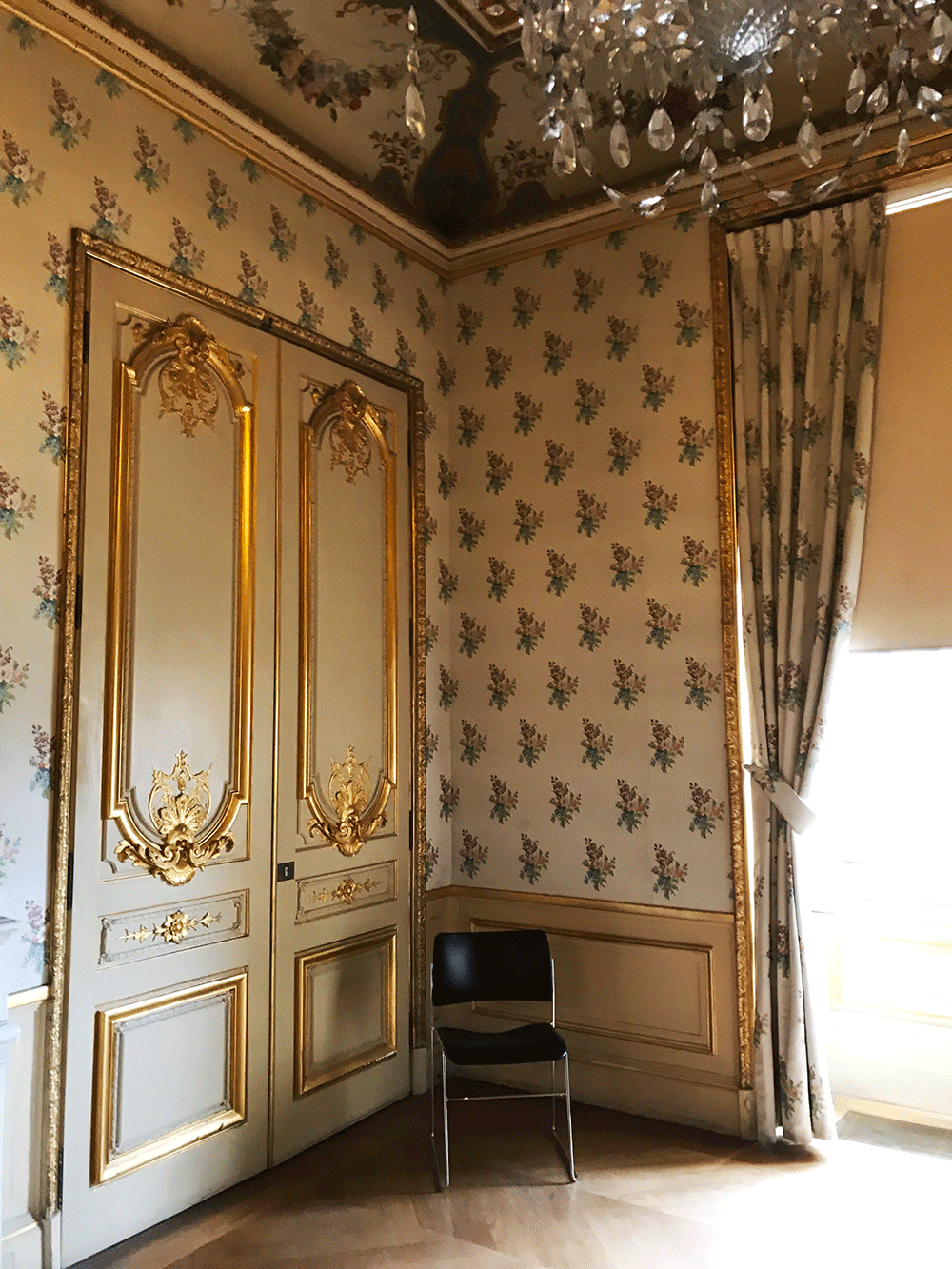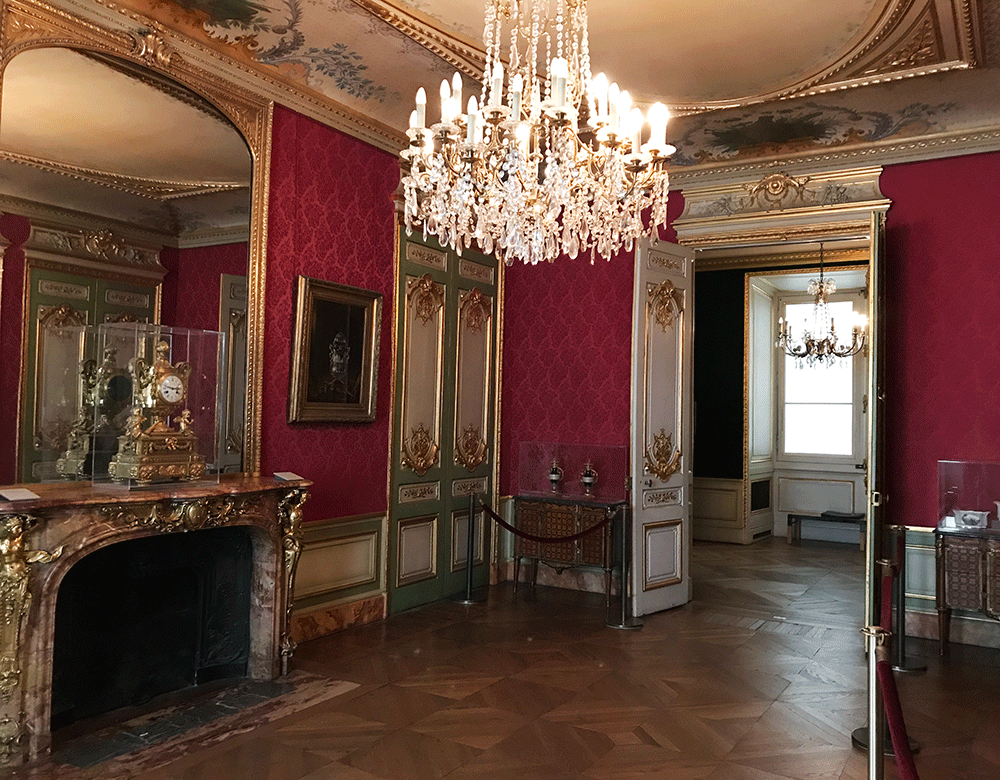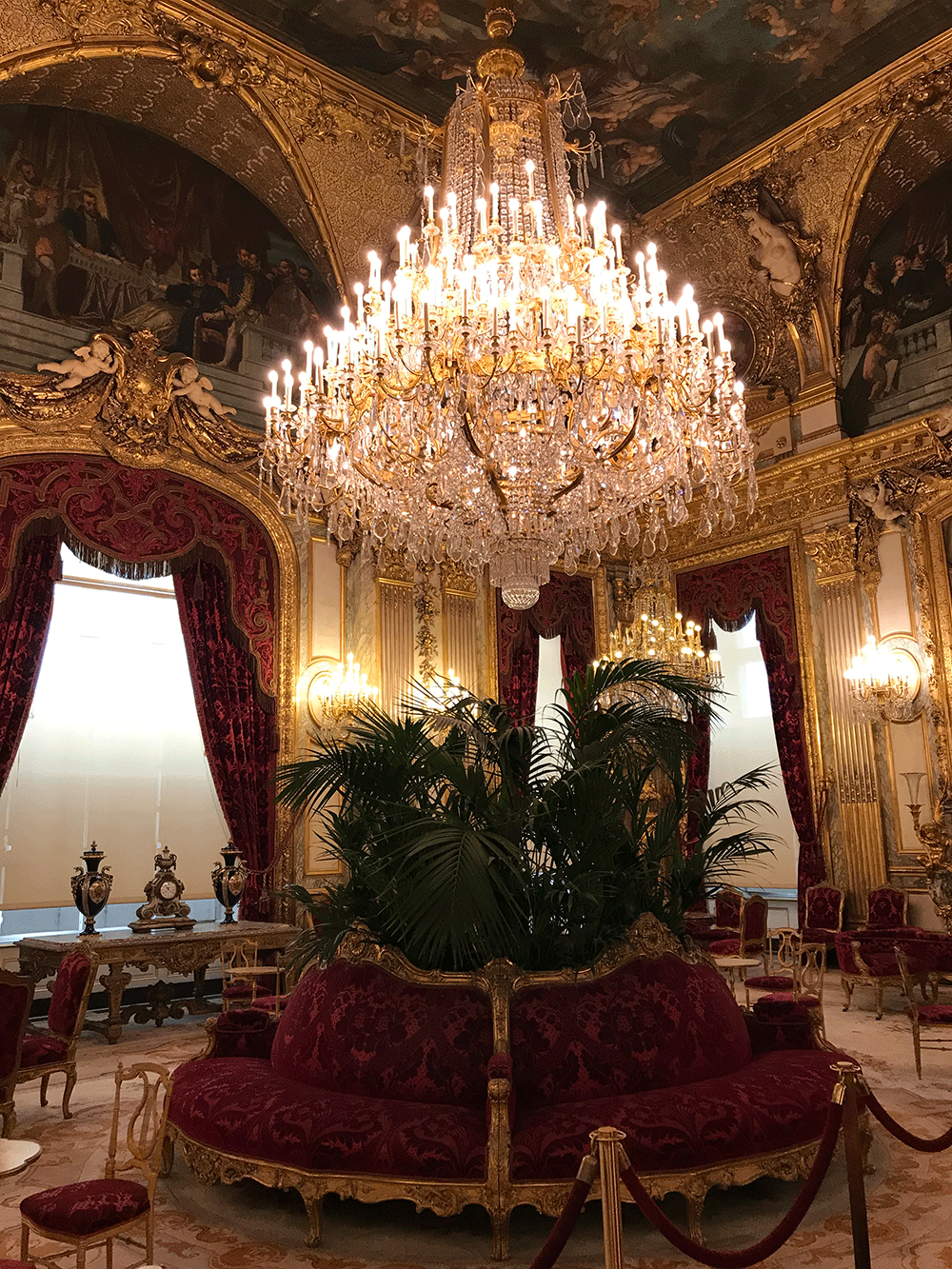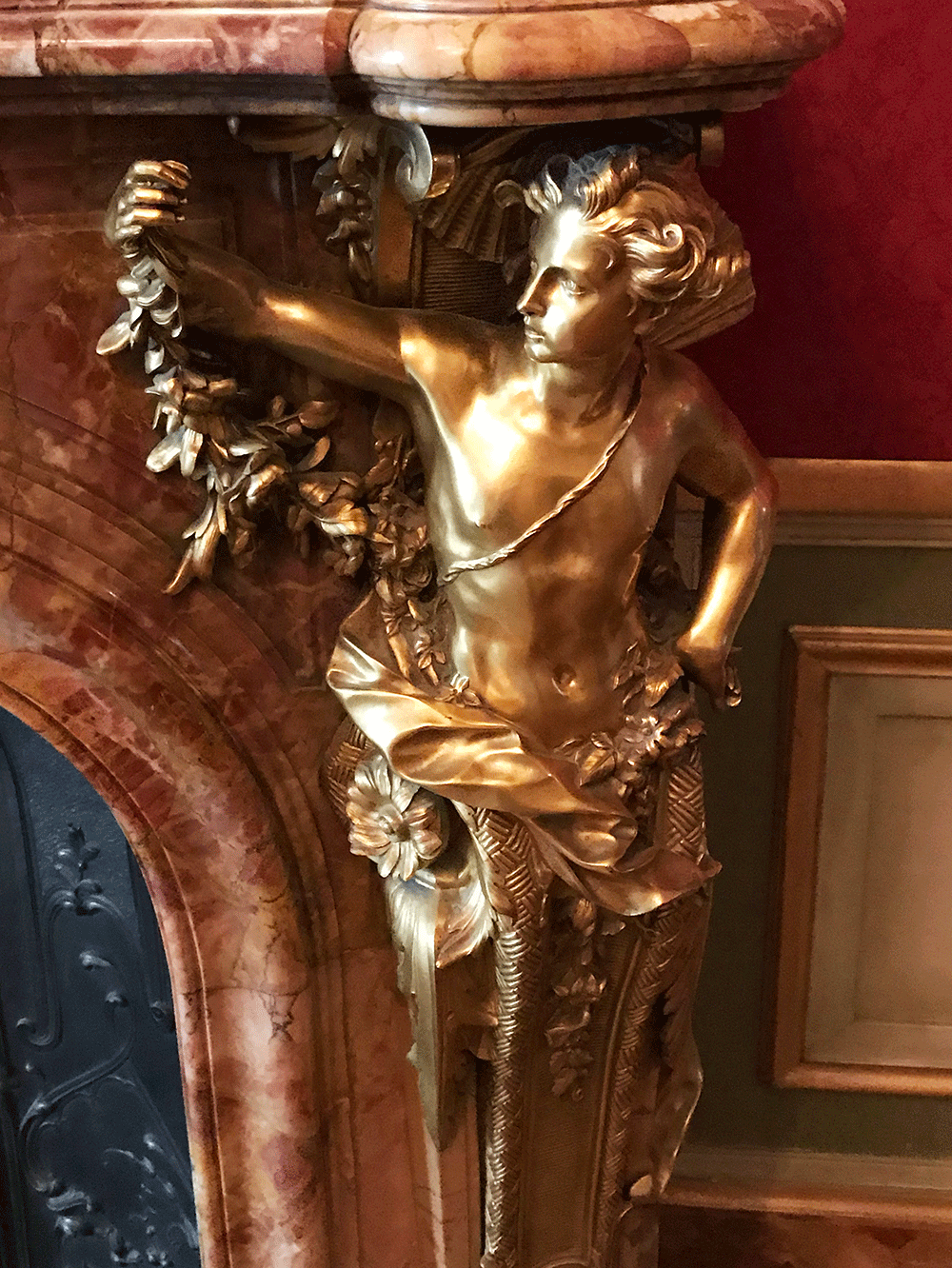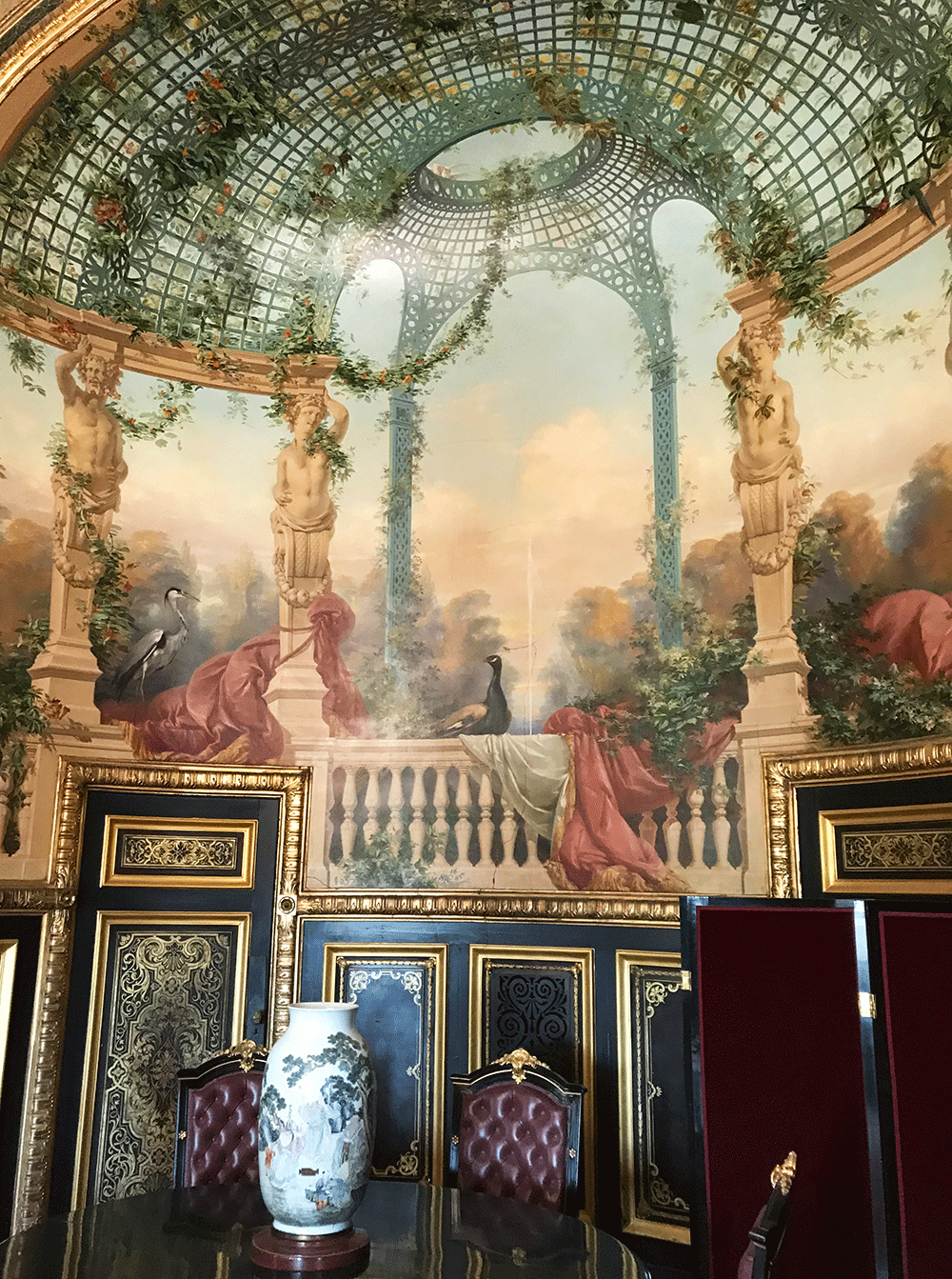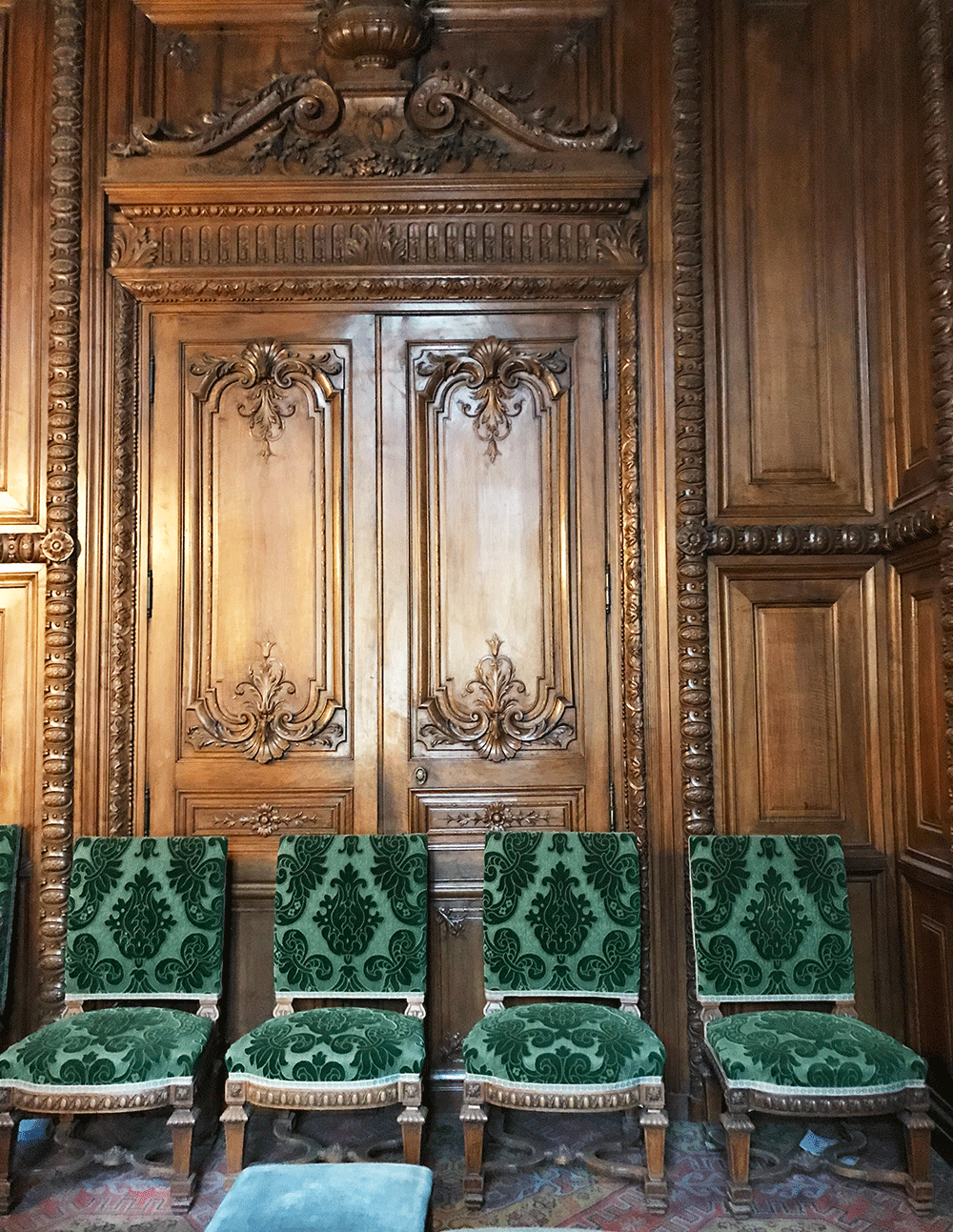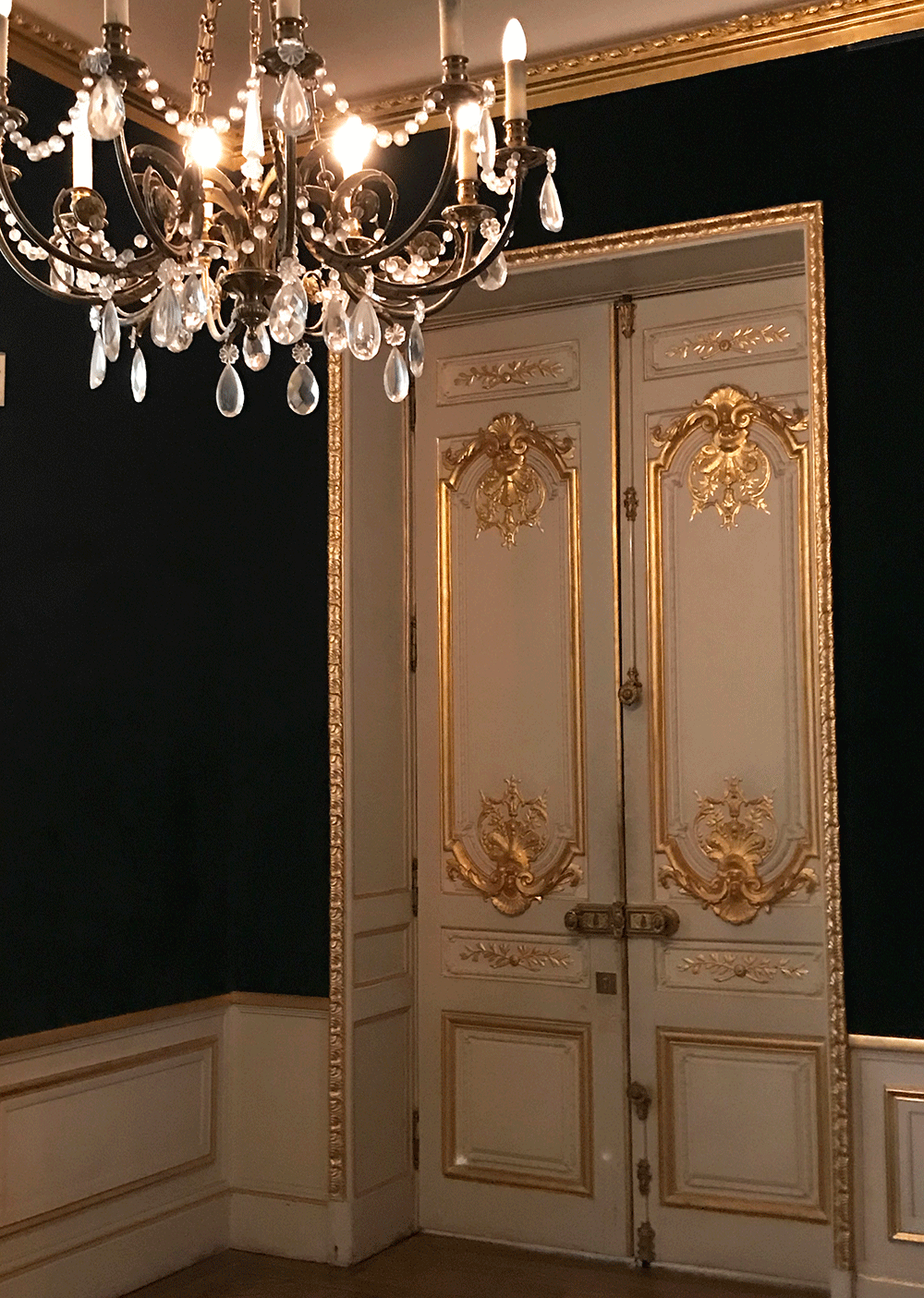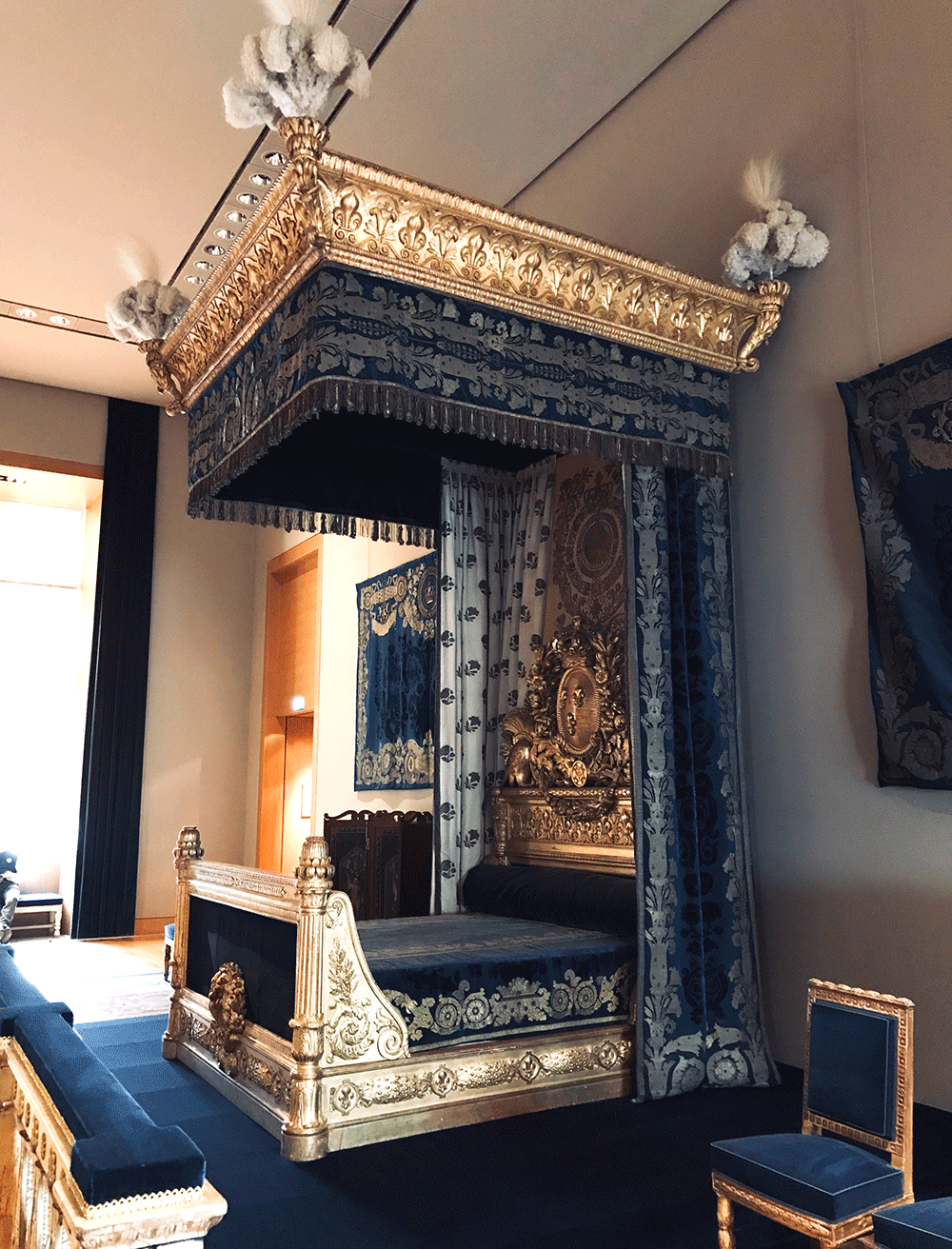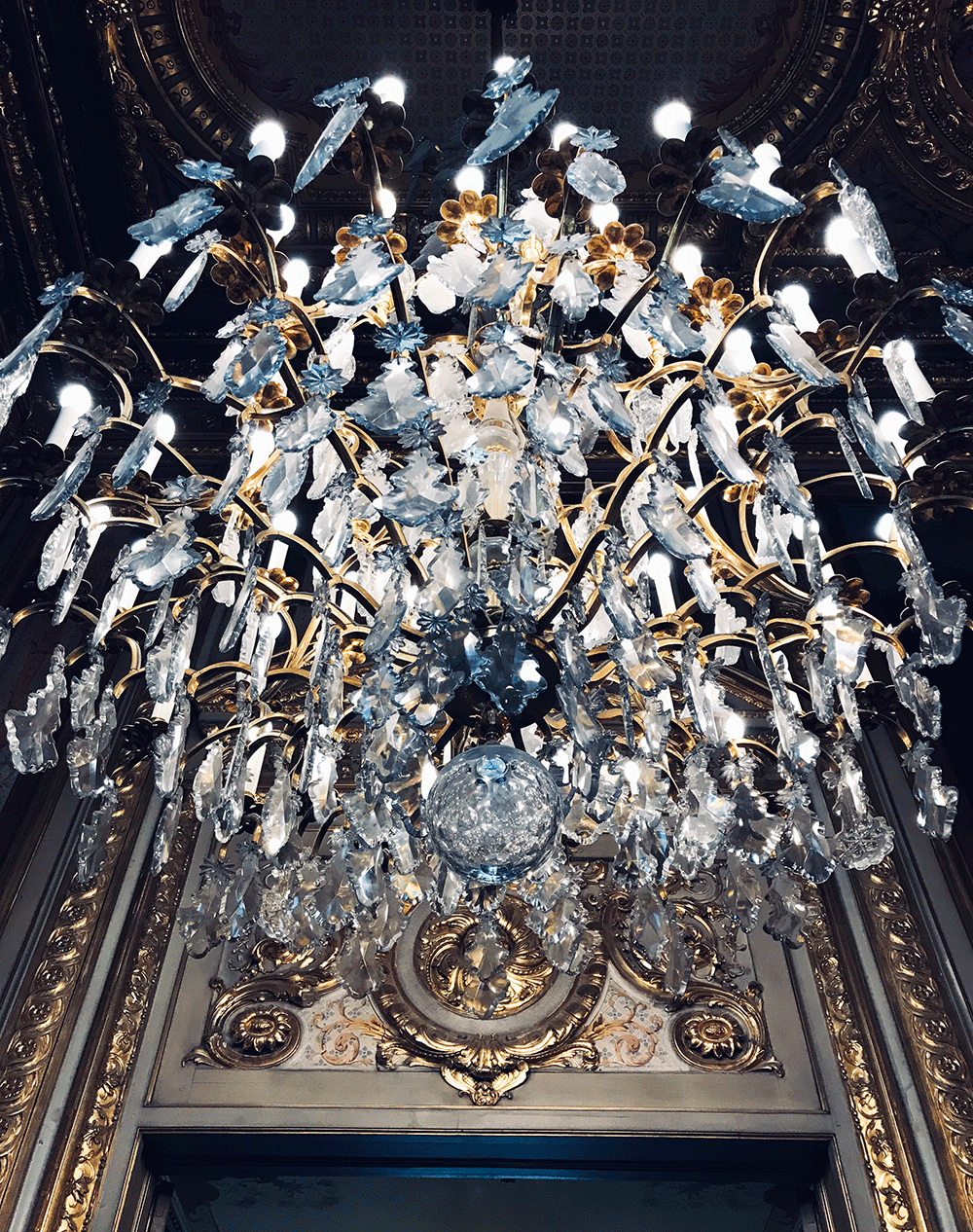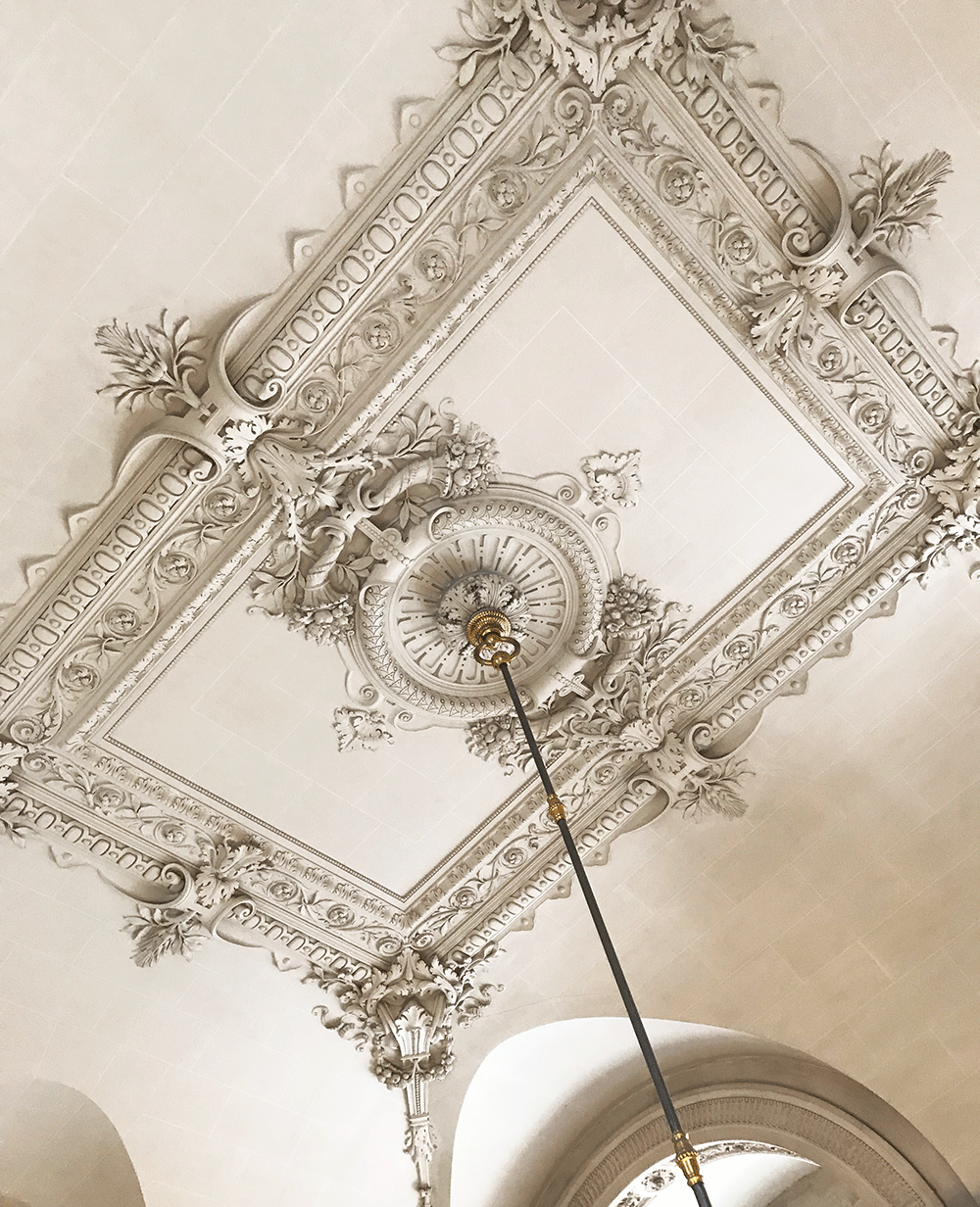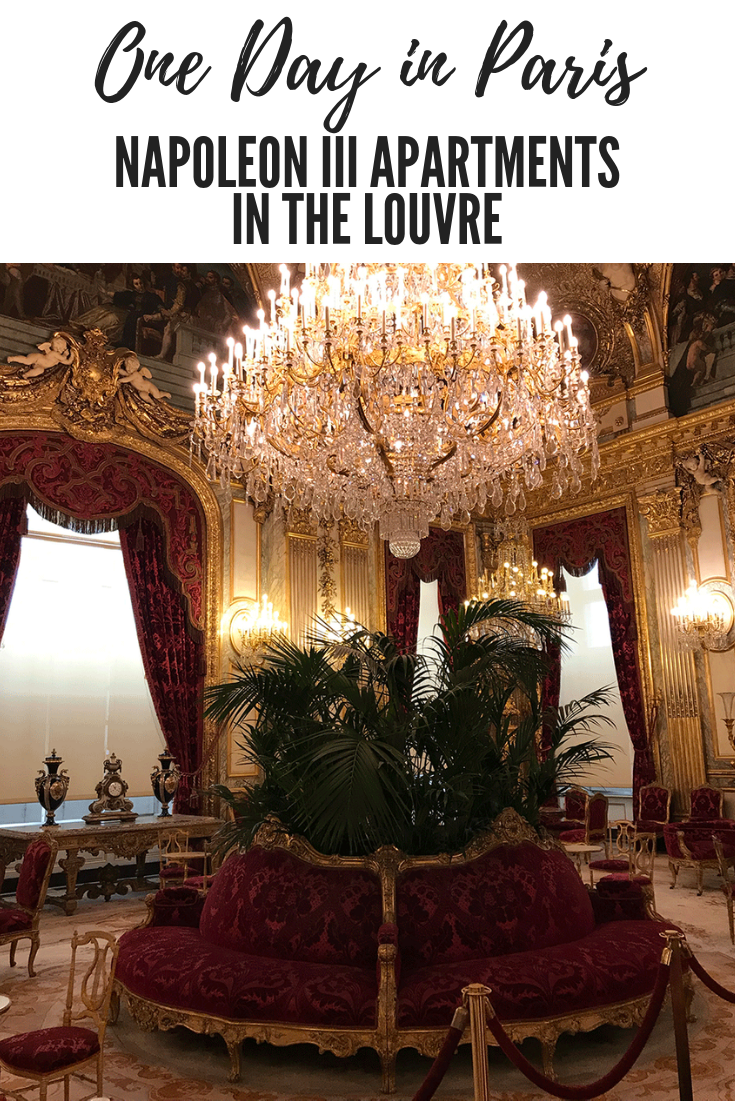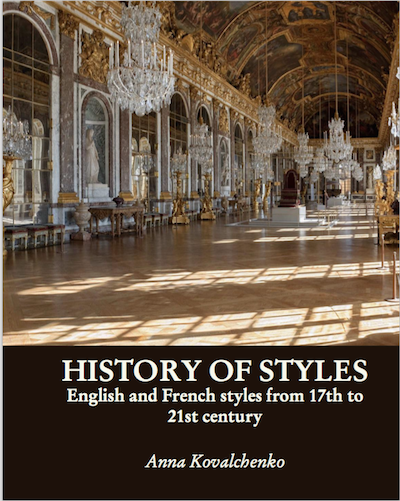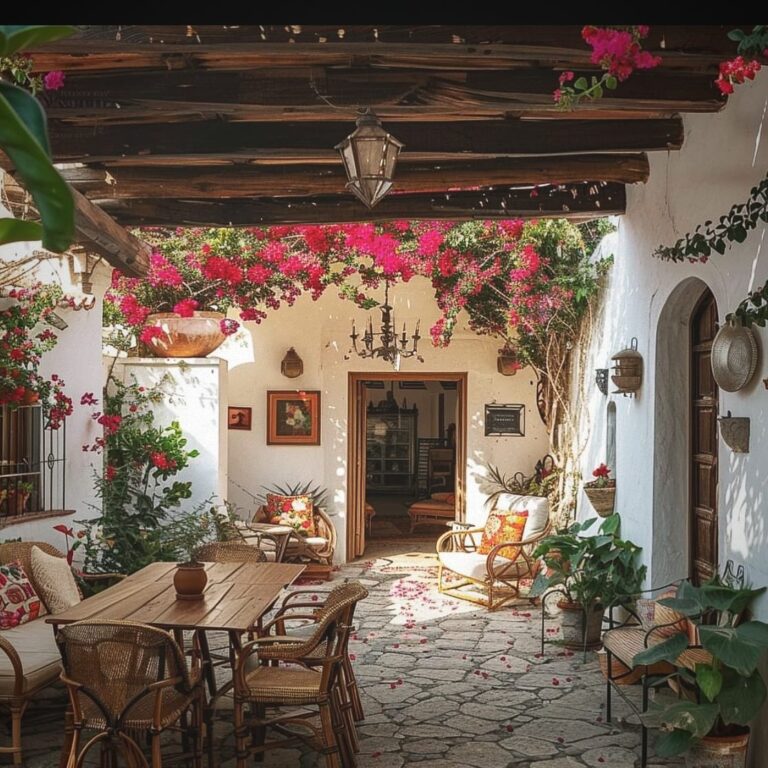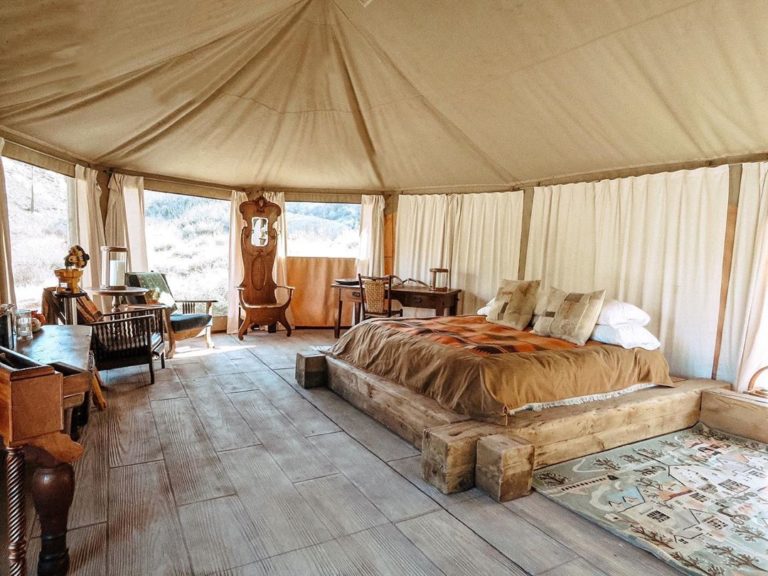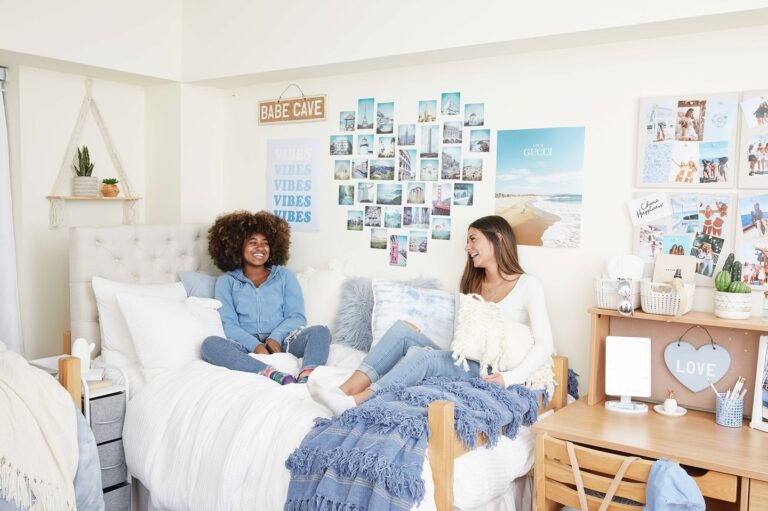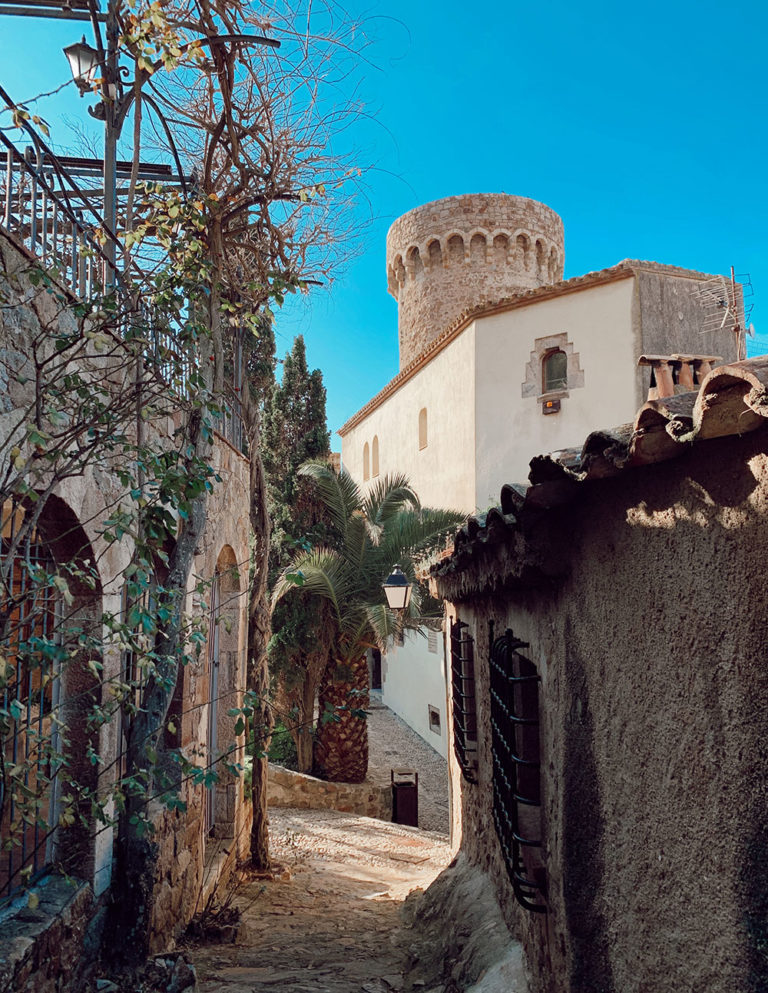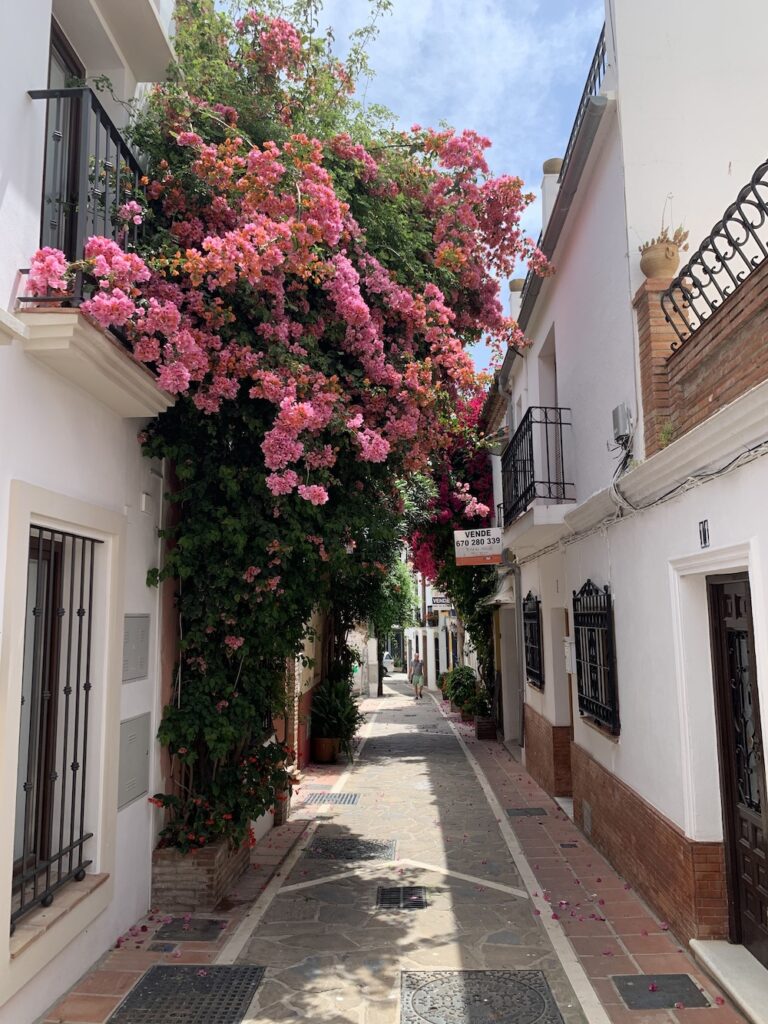One Day in Paris: Napoleon III Apartments in the Louvre
Paris has so many interesting places that probably one year is not enough to see them all. During my last trip, I spent four days in this incredible city and one of them I dedicated to visiting the Louvre.
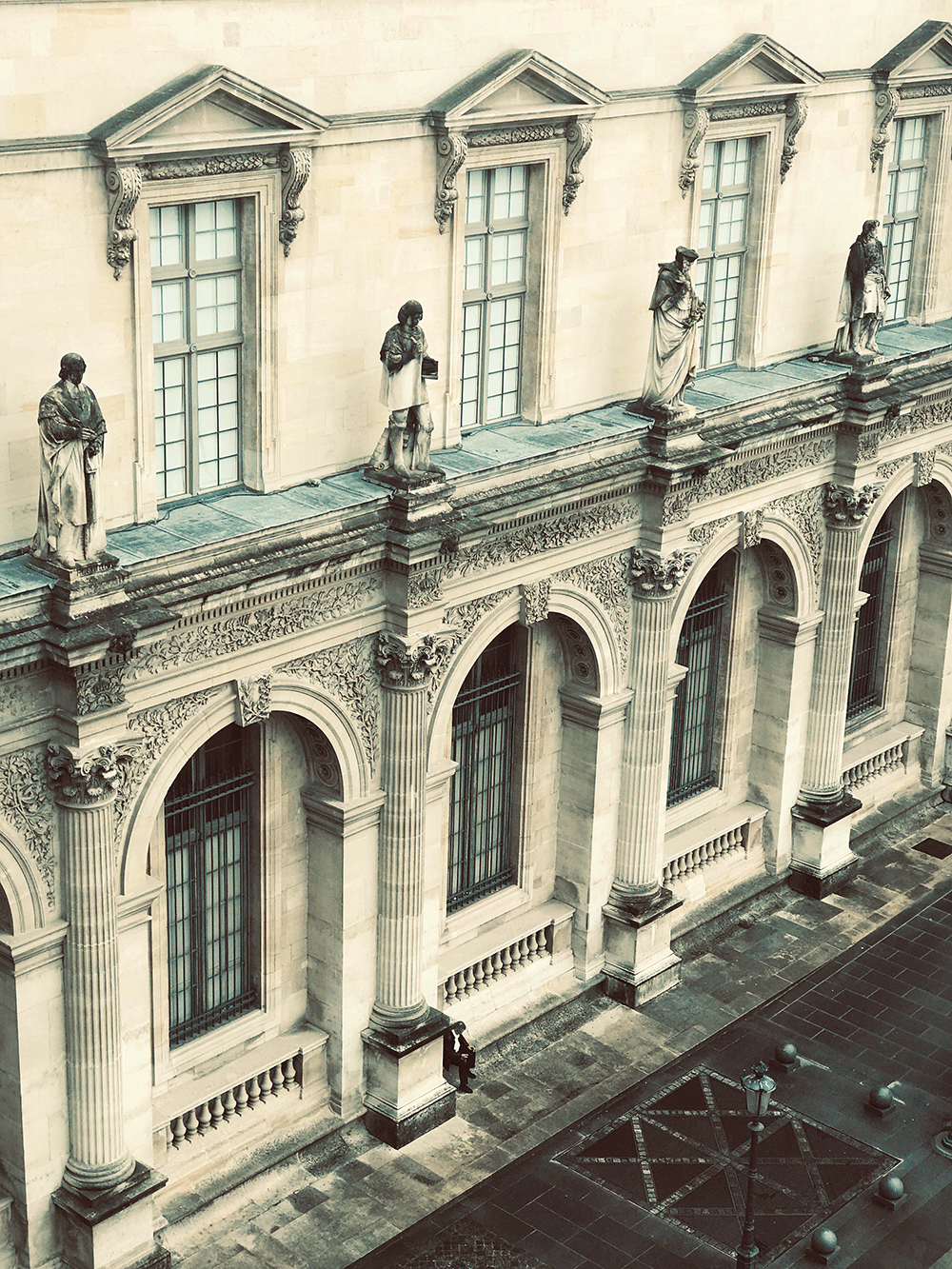
Of course, for me as an interior designer, the most interesting part was architecture and interiors. The Louvre was once the royal residence, but the interiors in which the kings lived did not remain (the Louvre was rebuilt several times). The only thing that reminds of former luxury is the apartments of Napoleon III.
Charles Louis Napoleon Bonapart or Napoleon III was the first president of the French Republic, which he was ruling from December 20, 1848 to December 1, 1852.
The nephew of Napoleon I, after a series of conspiracies to seize power, became a president of the Republic in 1848. He established an authoritarian police regime and a year later he proclaimed himself emperor of the Second Empire.
After ten years of fairly tight control, the Second Empire, which became the embodiment of the ideology of Bonapartism, moved towards a certain democratization in 1860s. It was accompanied by the development of the French economy and industry. A few months after the adoption of the liberal constitution in 1870, which returned rights to parliament and the Franco-Prussian War put the end to the rule of Napoleon. The emperor fell into German captivity and never returned to France.
Napoleon III apartments are located in the Richelieu wing which appeared in the time of Napoleon. The emperor occupied several rooms here. Take a moment to look at the details of the impressive Lefuel Staircase – it was built in the mid-19th century, and has a double flight of stairs. Artist François Morellet was hired to redesign the windows in 2010, and he created fine, delicate glasses in black frames that contrasted with the sturdy stone stairwell.
The interior decor of these rooms can be described in one word – opulence, that is, the maximum number of decorations per 1 square meter. An outstanding amount of artists, decorators, and furniture makers were hired to design these apartments.
Crystal chandeliers, gilt bronze decorations, burgundy wallpapers produce an overwhelming, theatrical effect.
In terms of interior styles, predominantly it is French Baroque (Louis XIV), although later periods like Empire style are also incorporated.
Floral wallpaper becomes very popular in the XIX century, and we can see a beautiful example of it in this room. It is complimented with same design curtains and painted ceiling.
One undoubted advantage of visiting this part of Louvre is a very small amount of tourists. Meanwhile, Mona Lisa was continued to be stormed by the crowd I was able to take several photos of these stunning interiors with practically no other people around.
Carved wooden paneling is another popular option for decorating the walls at that time. In combination with dark green damask fabric, they look very masculine and bold.
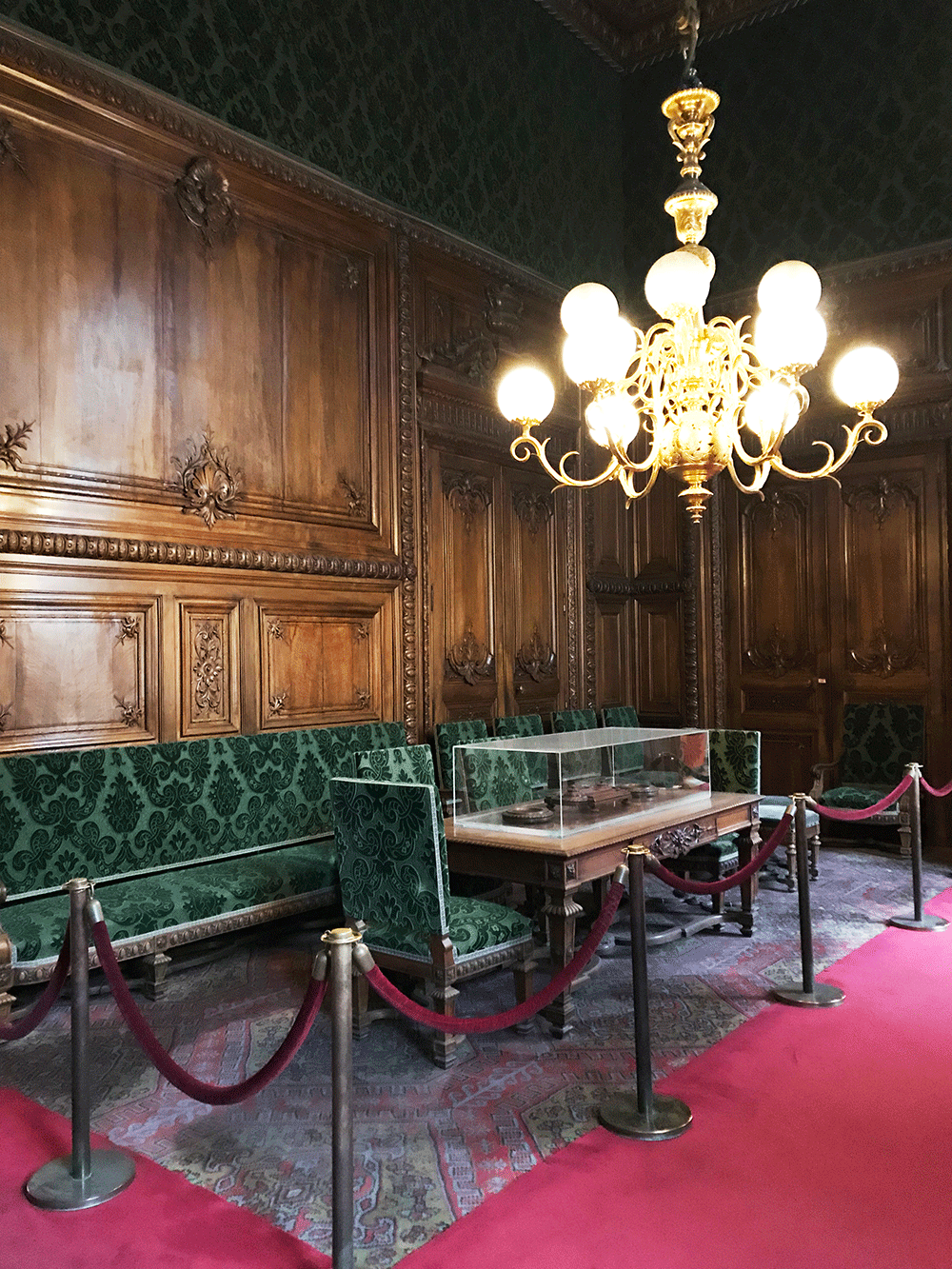
The large drawing room is the epitome of the luxury – it represents the taste for the opulence of that period. The ceiling features Charles-Raphaël Maréchal’s painting of The Reuniting of the Louvre and the Tuileries by Napoleon III. The lavish stucco decorations are by Tranchant. Finally, the magnificent chandelier is the focal point of this tremendous interior:
When you are so overwhelmed by the amount of gold and glitter it is really hard to look into small details, although each one of them is very intricate and deserves attention:
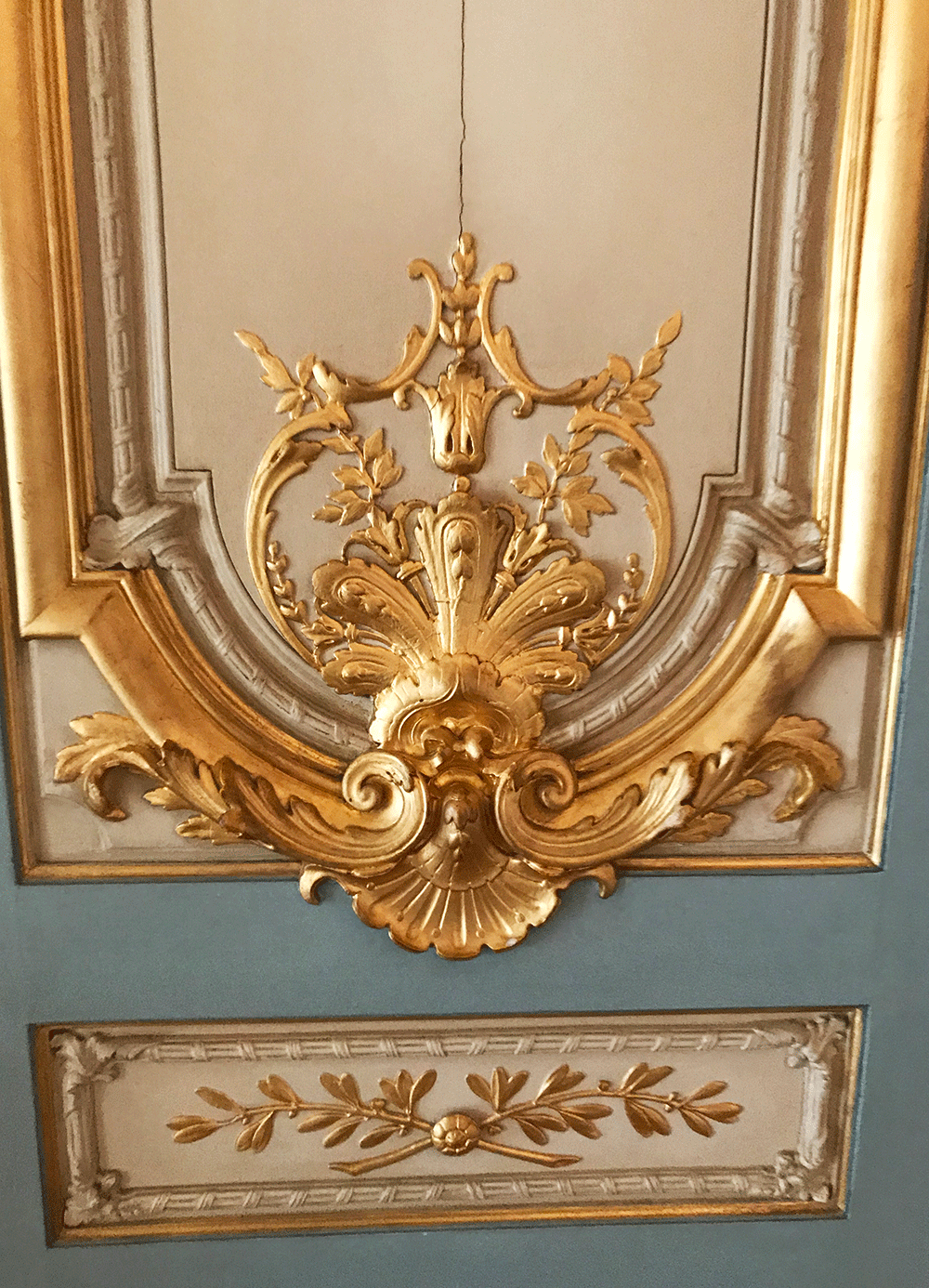
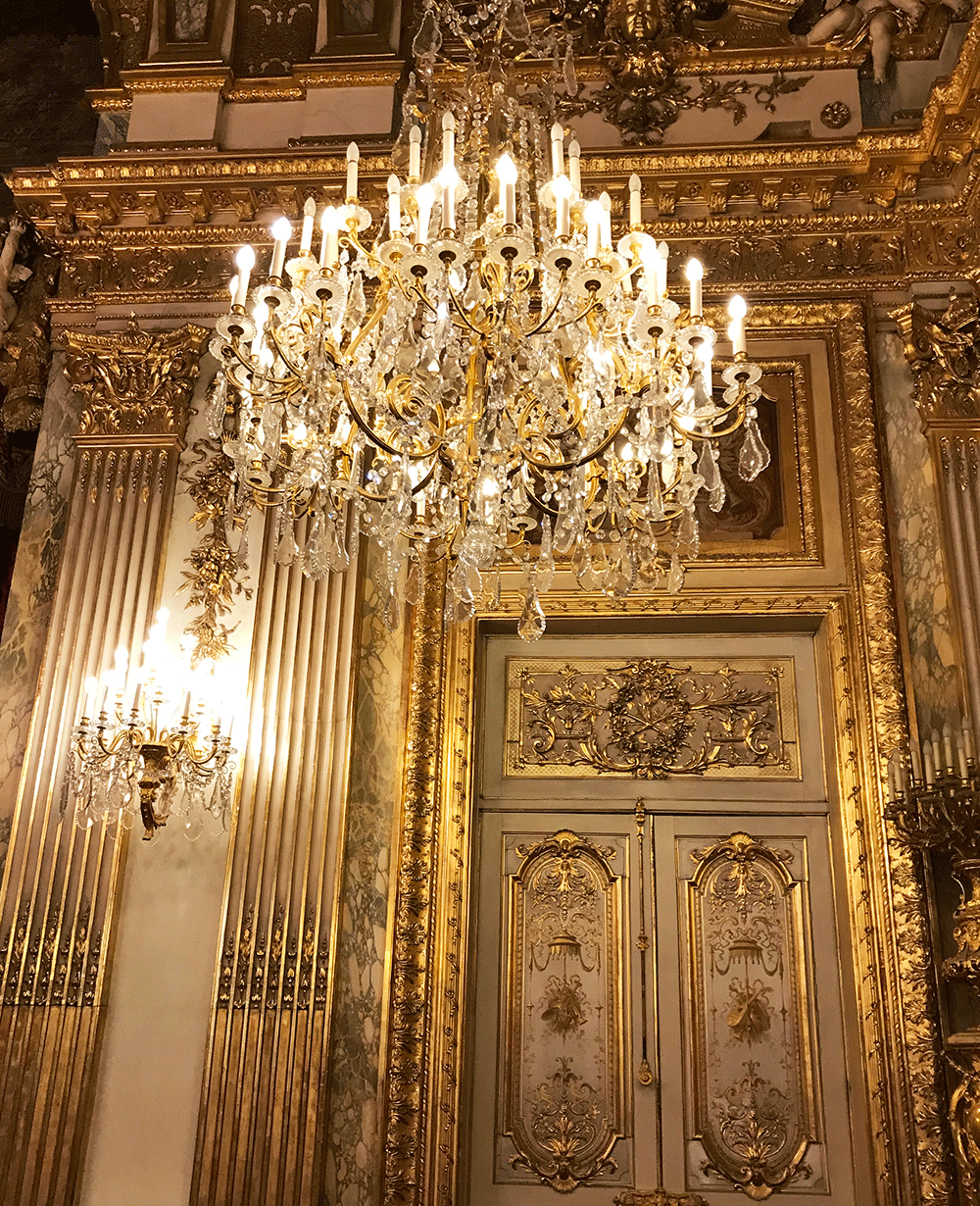
This was my favorite part of Napoleon III Apartments. Painted gazebo looks so real and vivid that you almost hear the birds singing:
The dining room is one of the most impressive – the huge dining table is able to host a small village. The ceiling is decorated with a trompe l’oeil sky by Eugène Appert. The doors are made of the dark wood complimented with gilt bronze. Red leather chairs look solemn and formal. The floor is covered with an antique oriental rug.
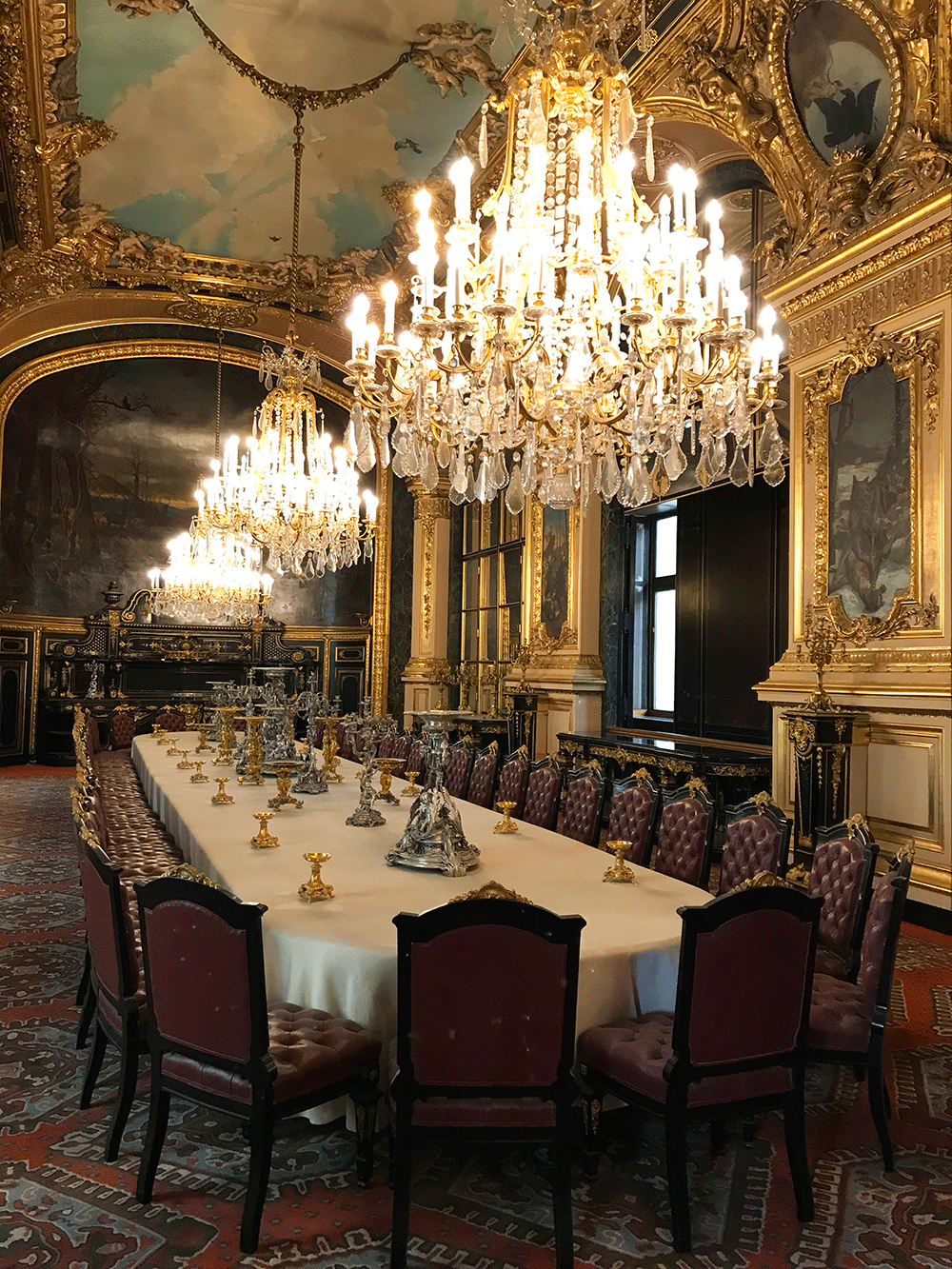
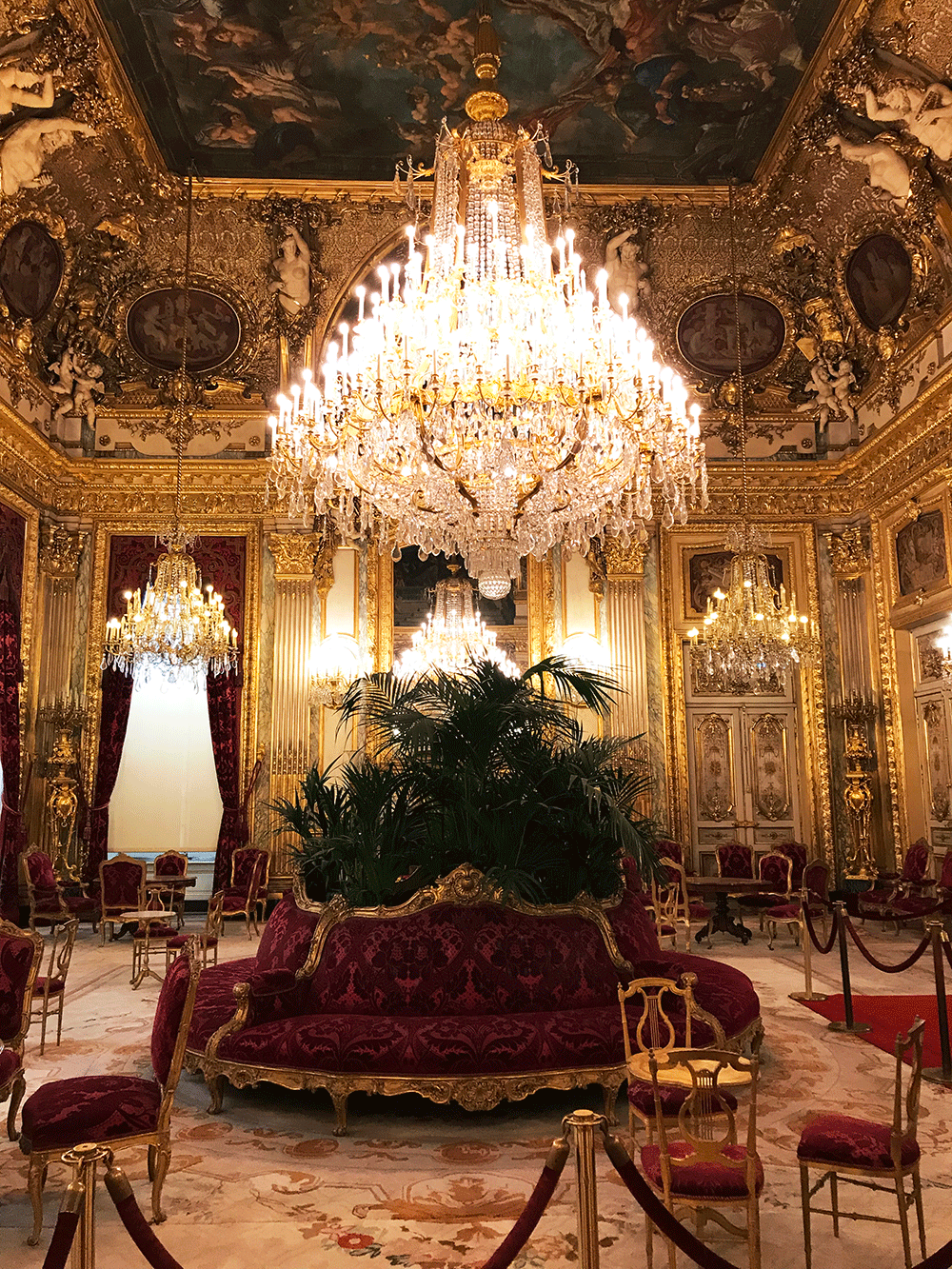
Ornaments used for decoration are typical for Louis XIV style – acanthus leaves, S and C scrolls, flowers, and cupids.
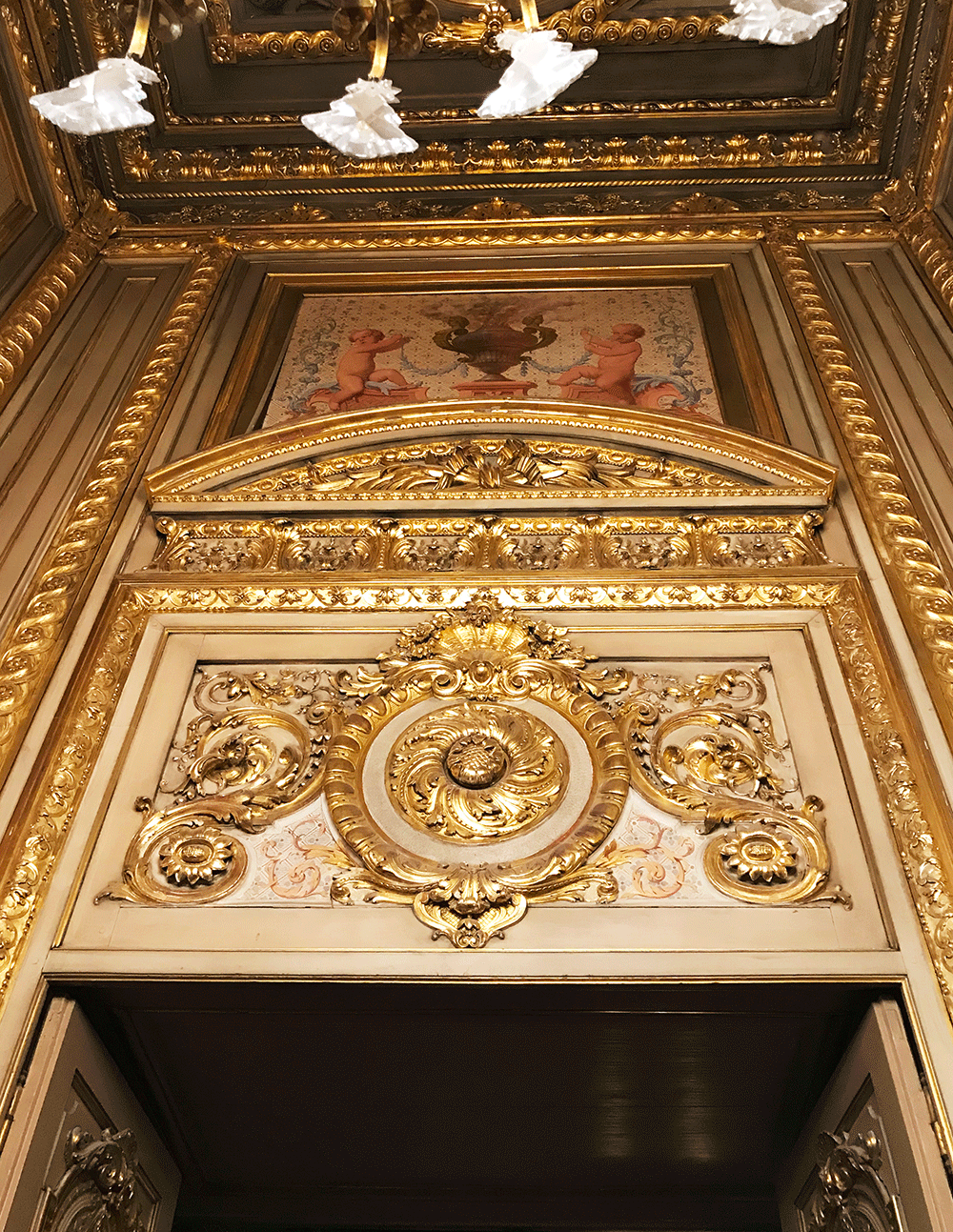
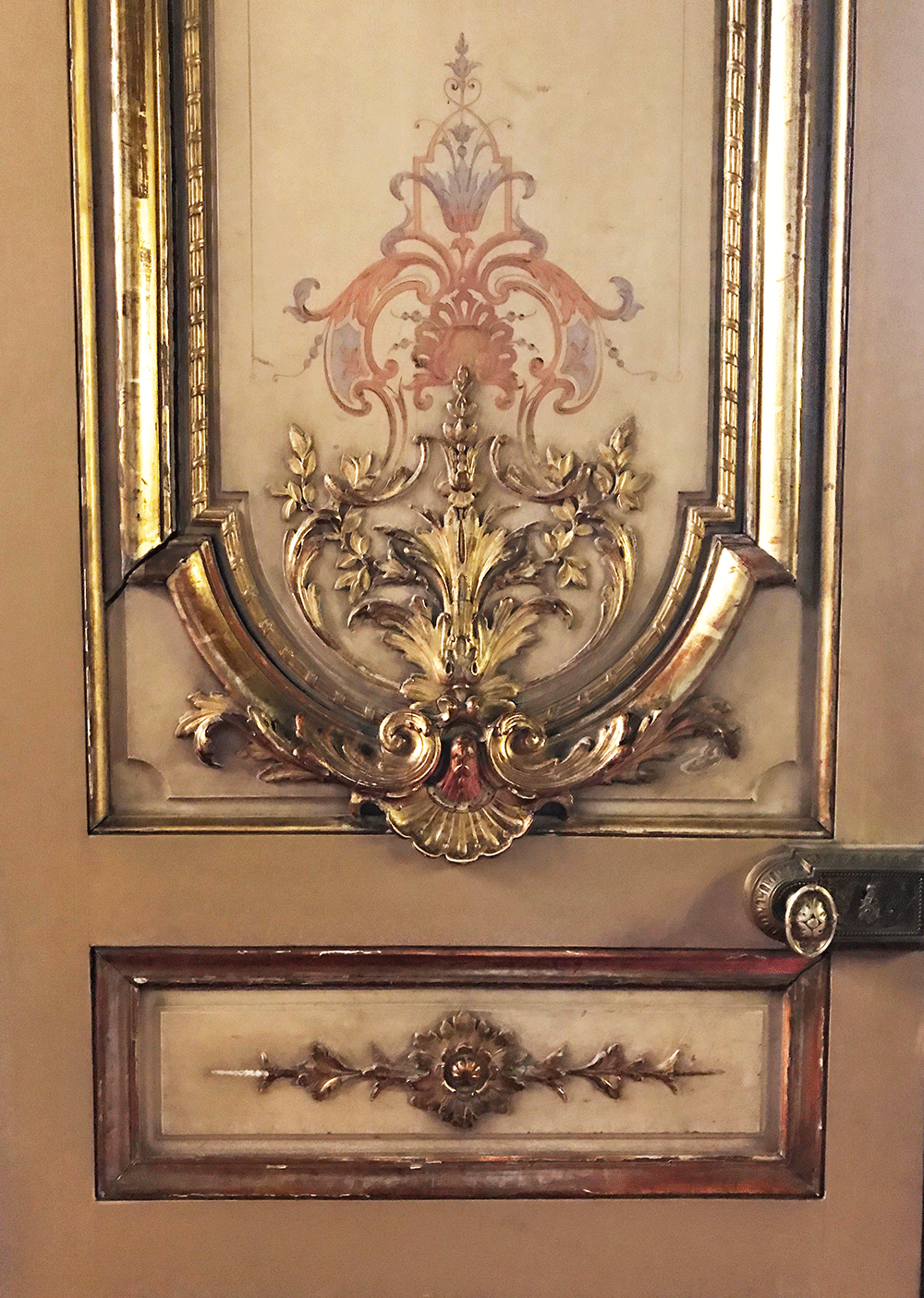
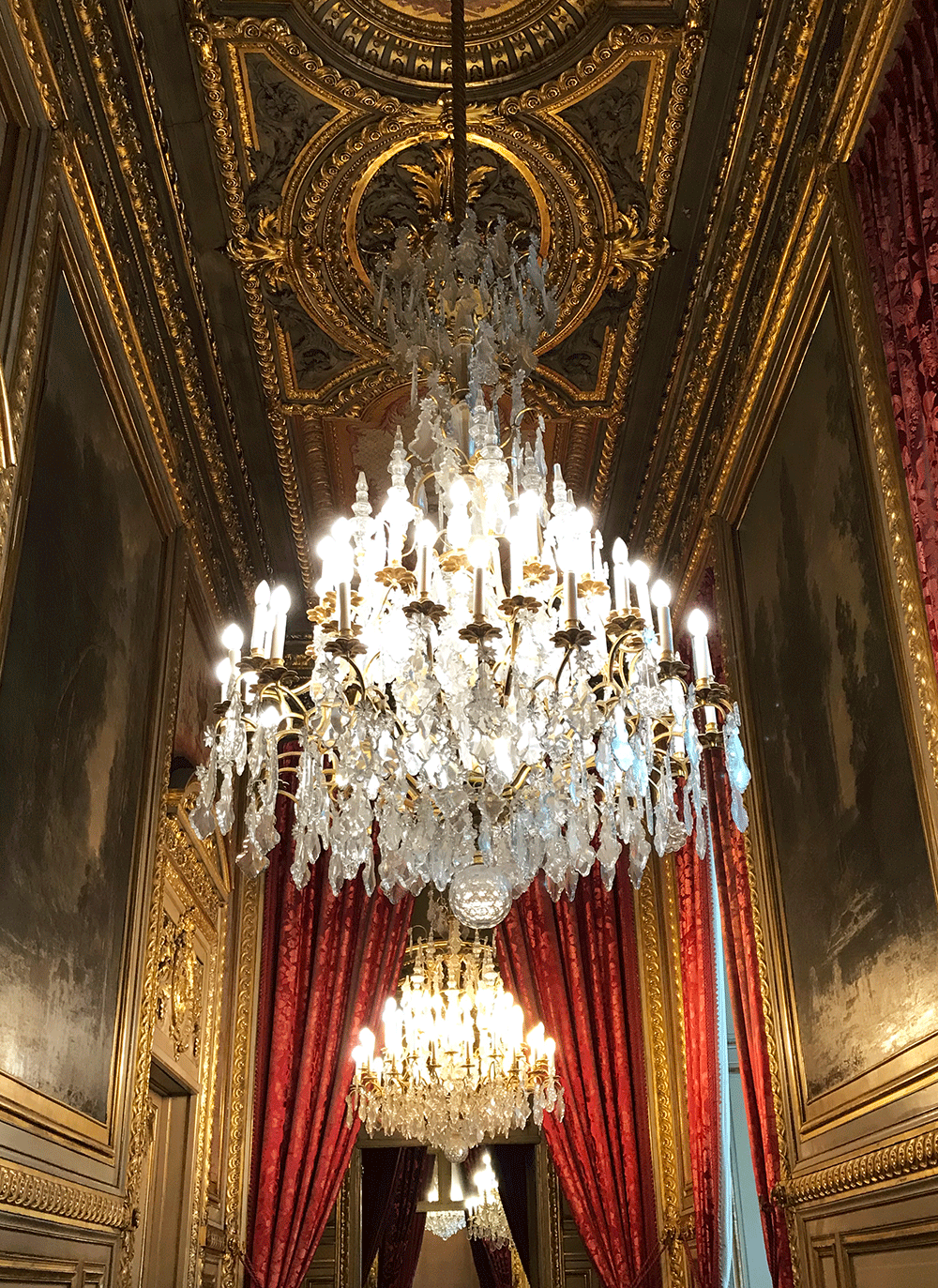
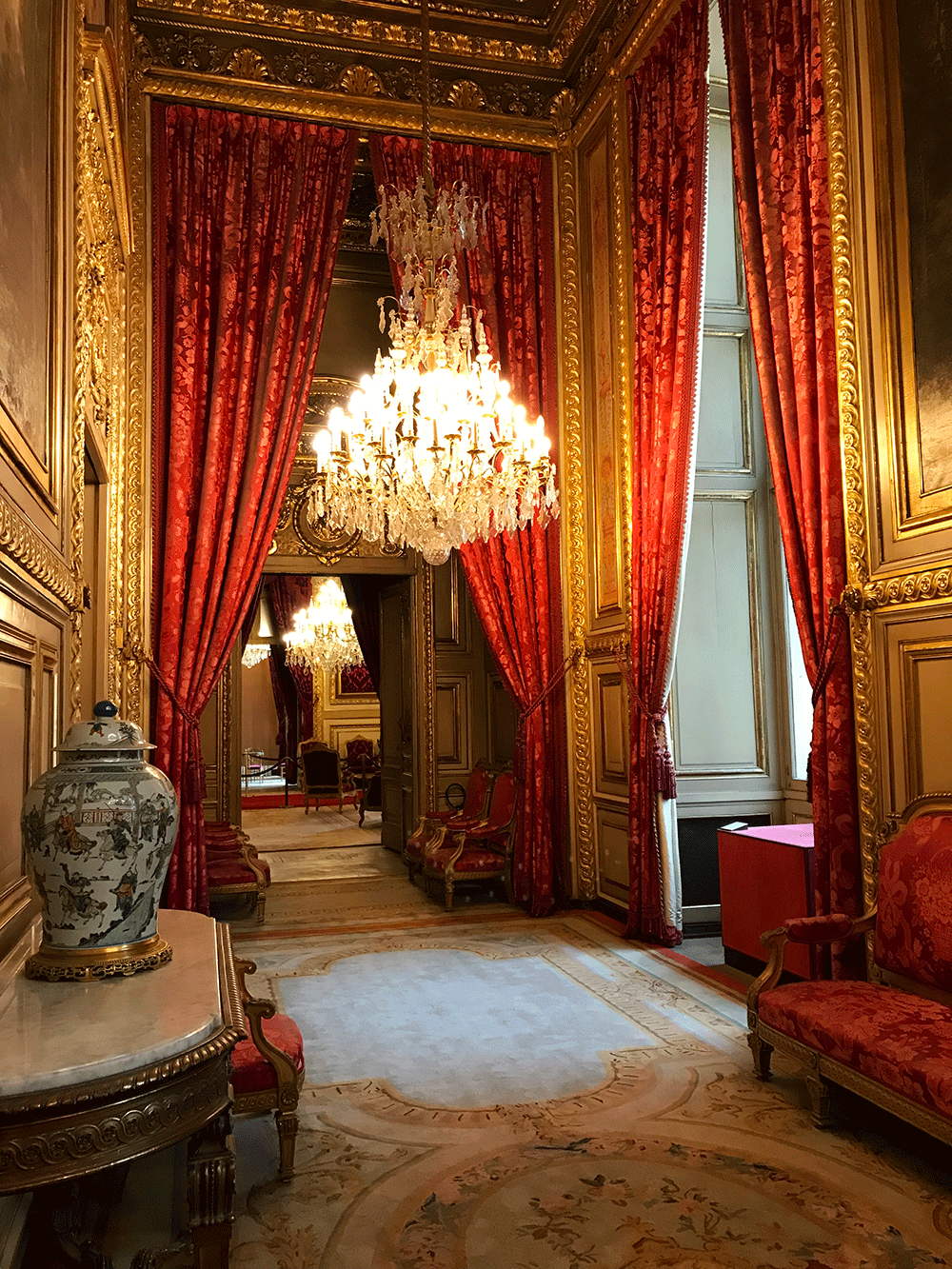
Bedroom furniture is an eclectic mixture of Baroque and Empire styles:
This type of sculptural decoration is called Mascaron – a fantasy human or animal head.
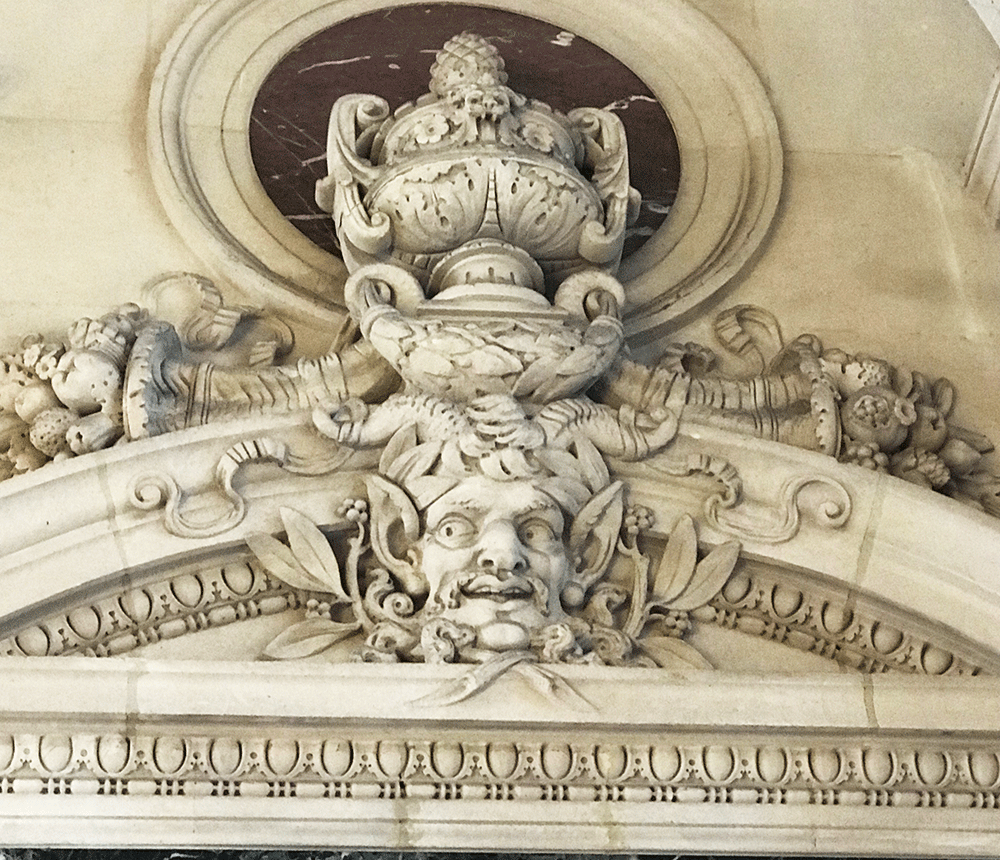
Intricated stucco on the ceilings takes your breath away:
Liked this post? Pin it for later:
Want to learn more about various historic interior styles? Check out my History of Styles ebook:

